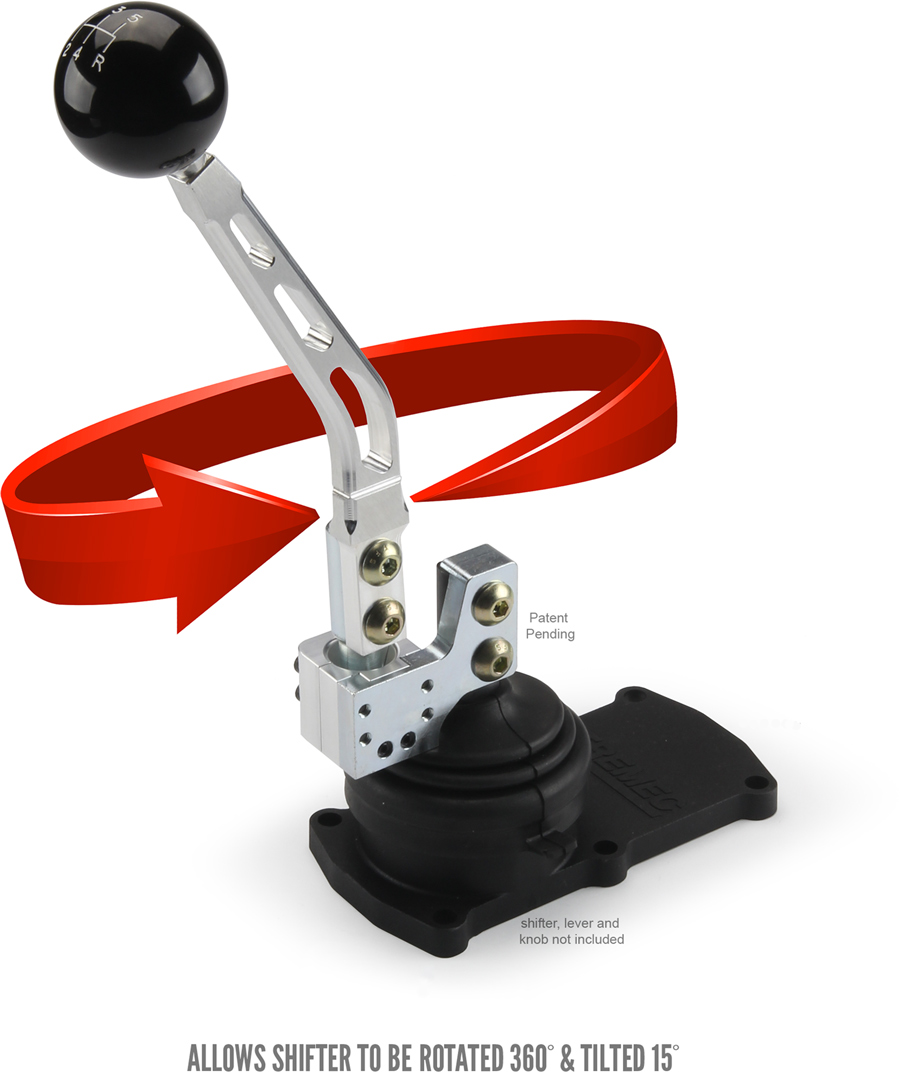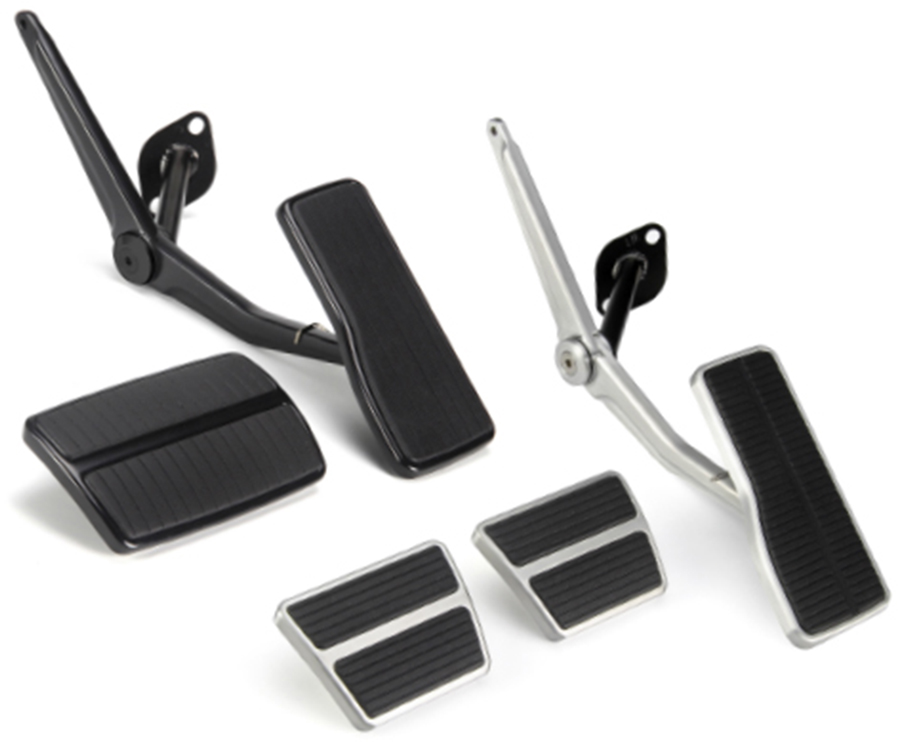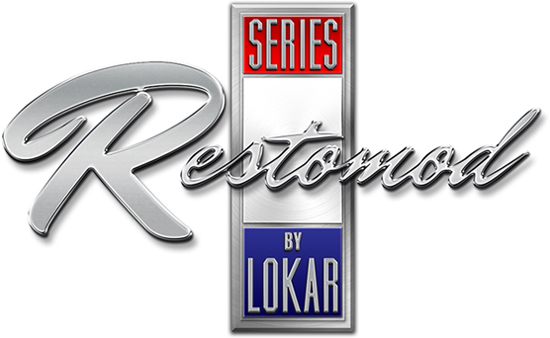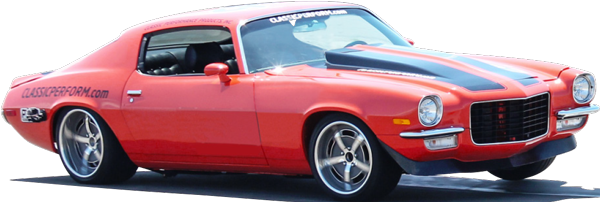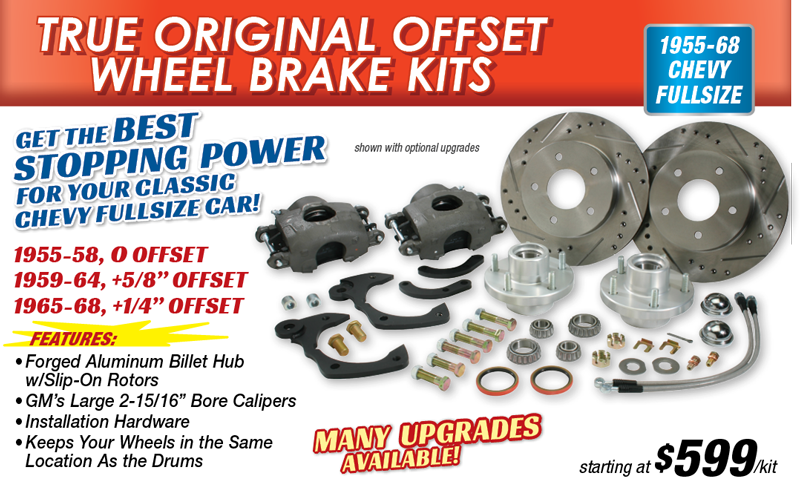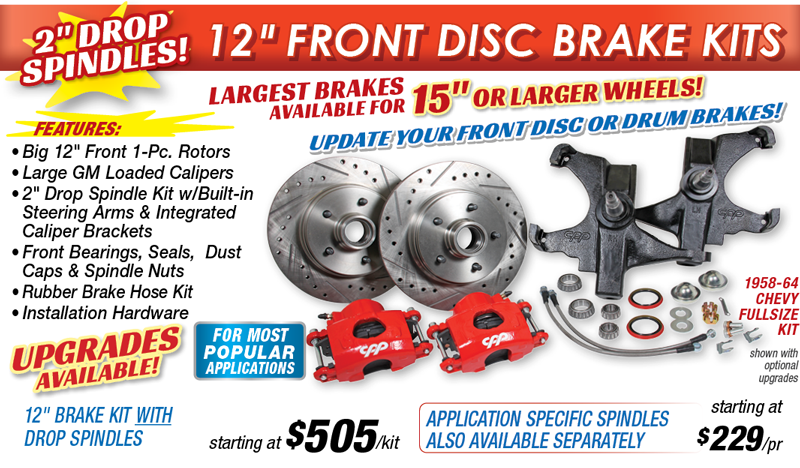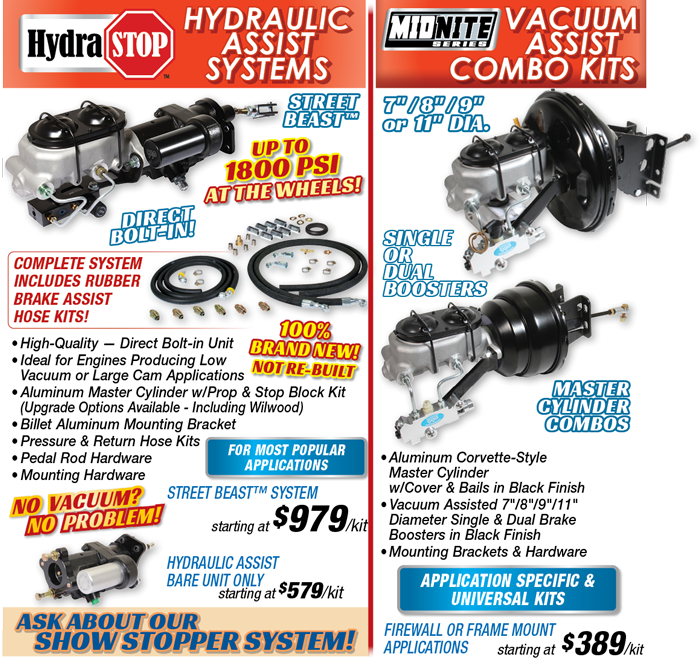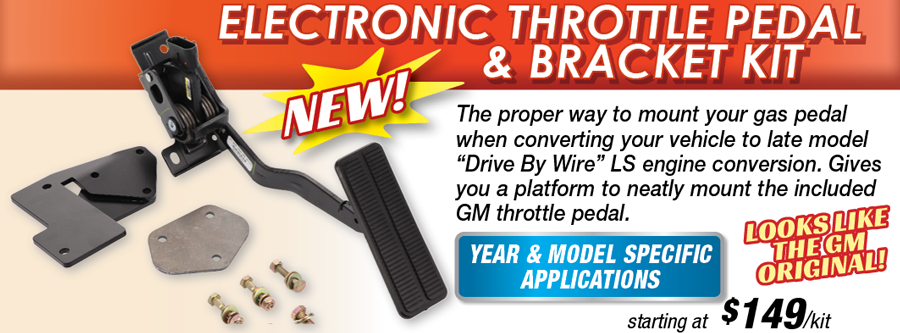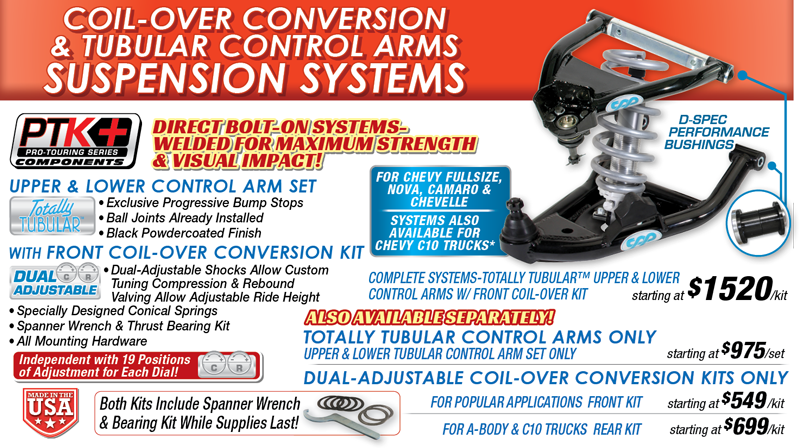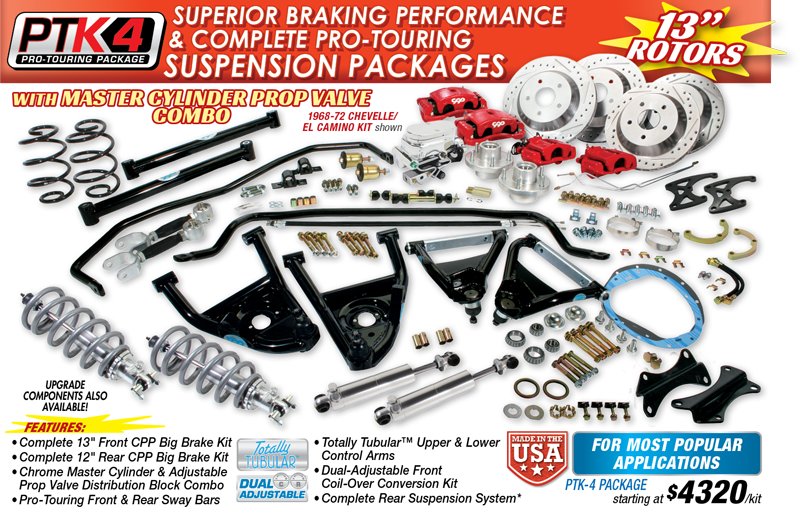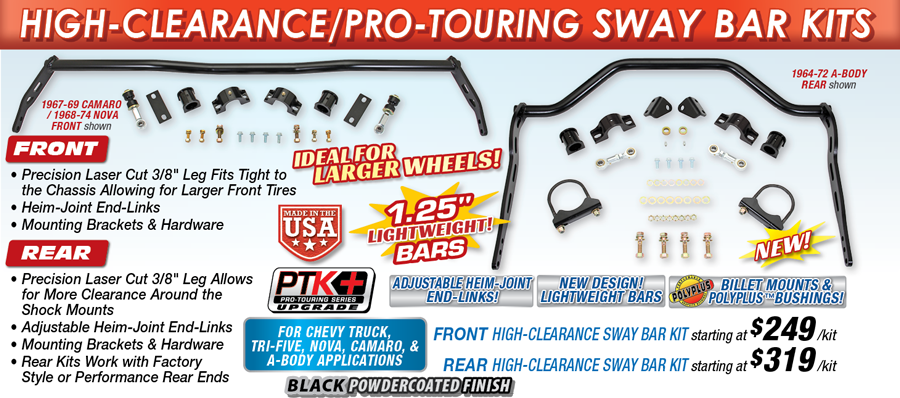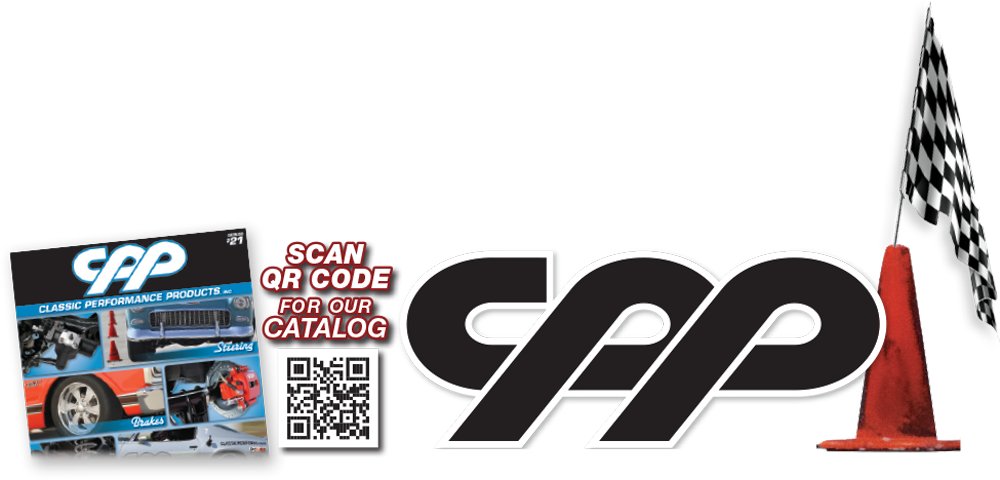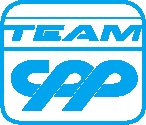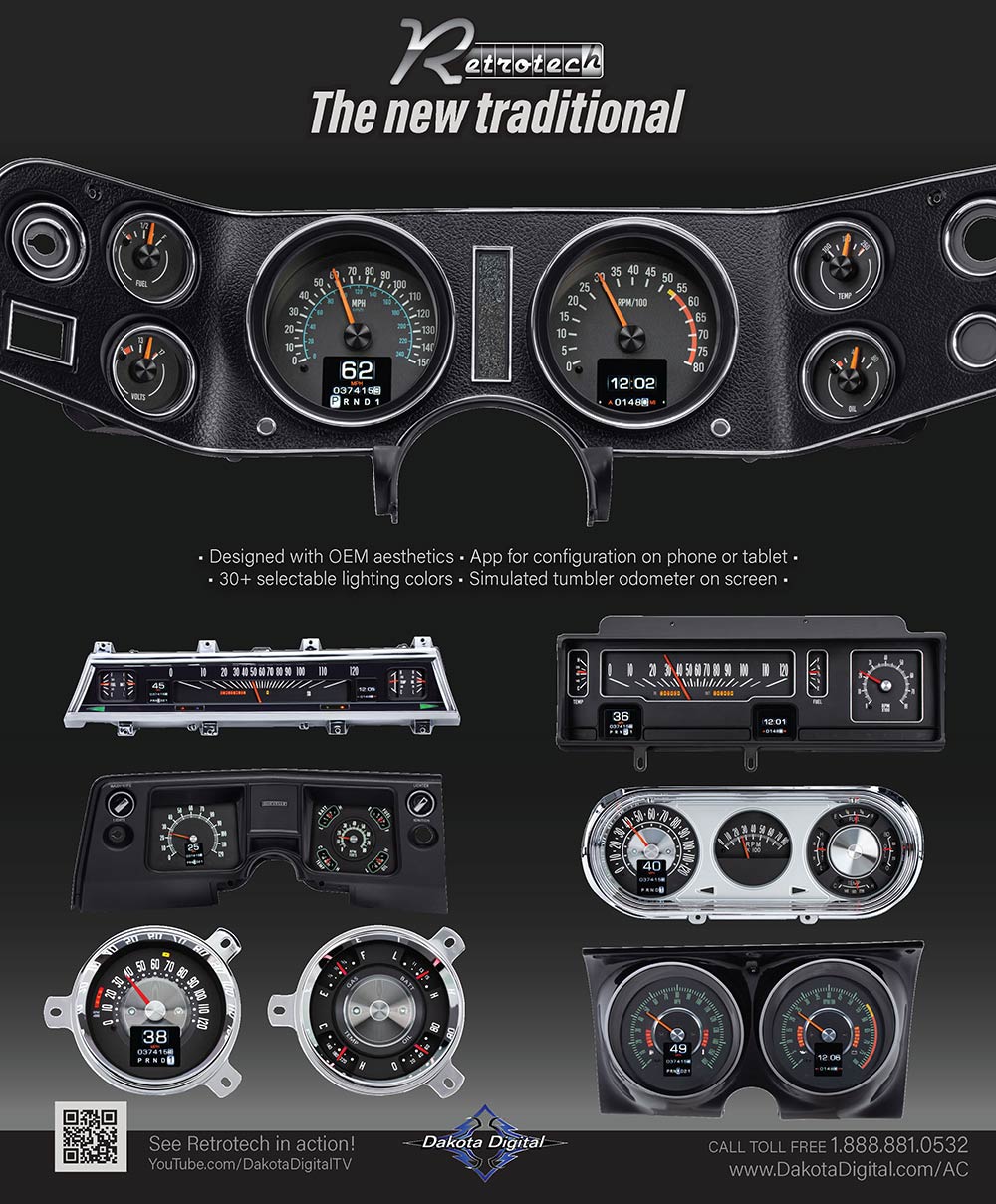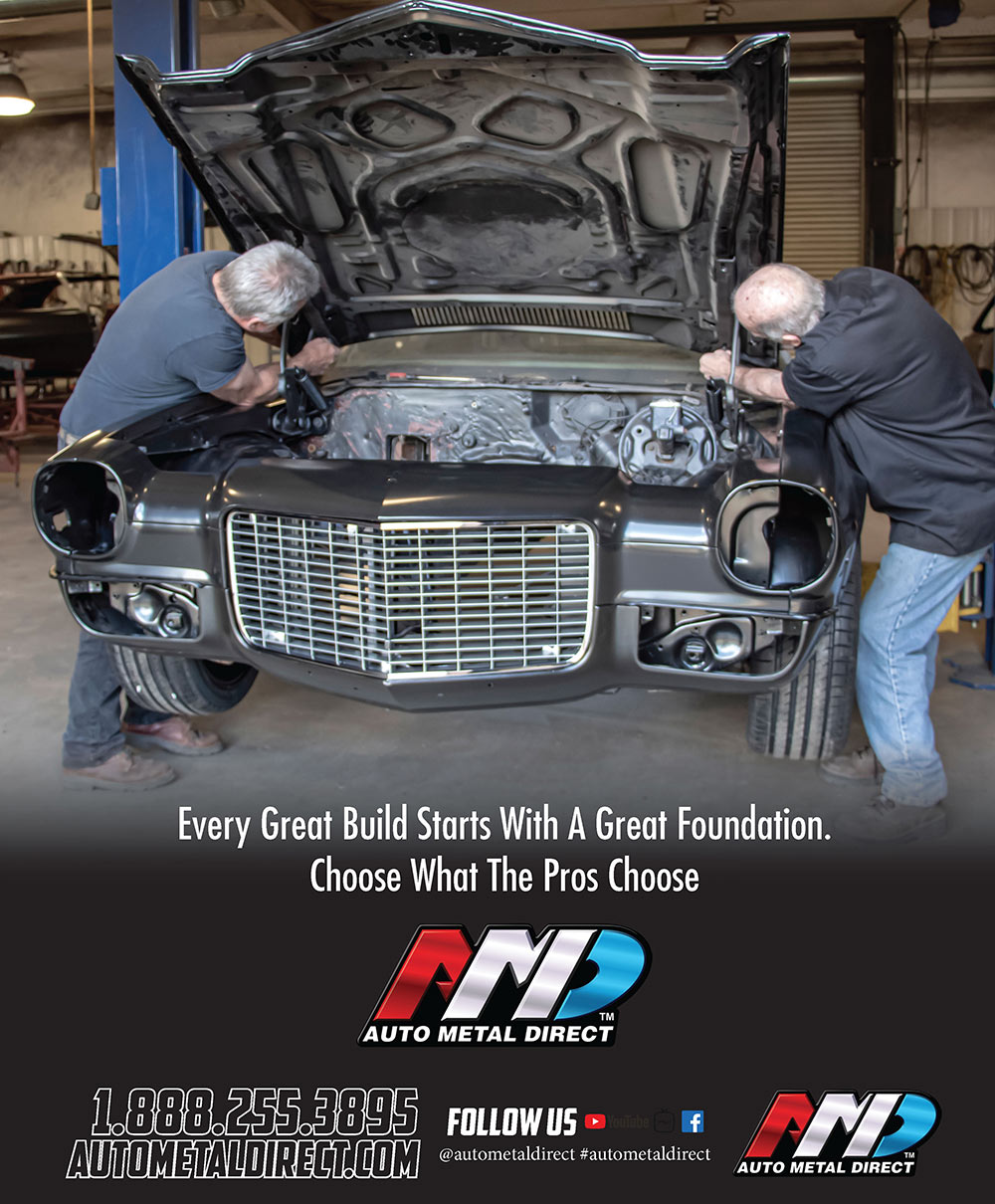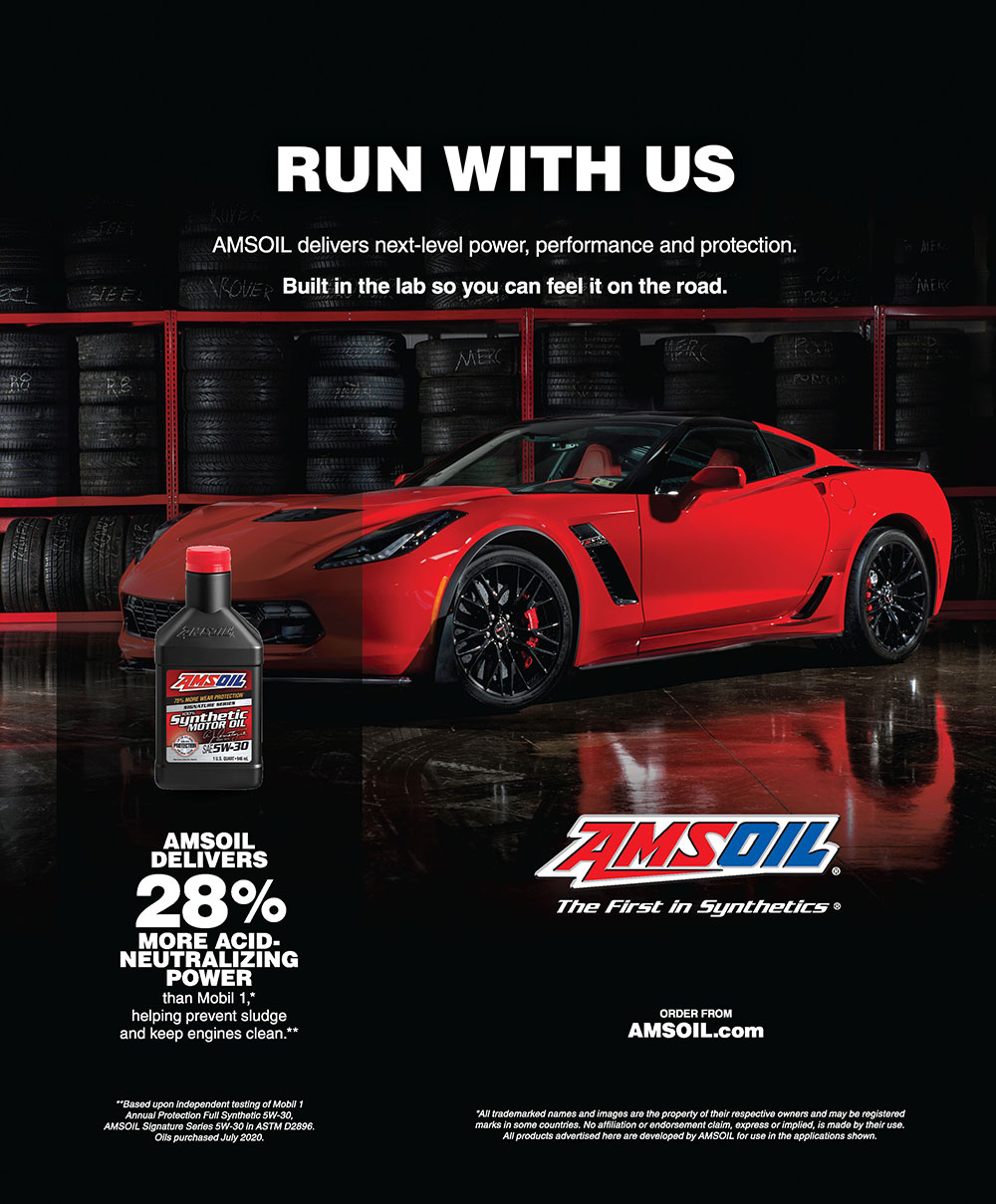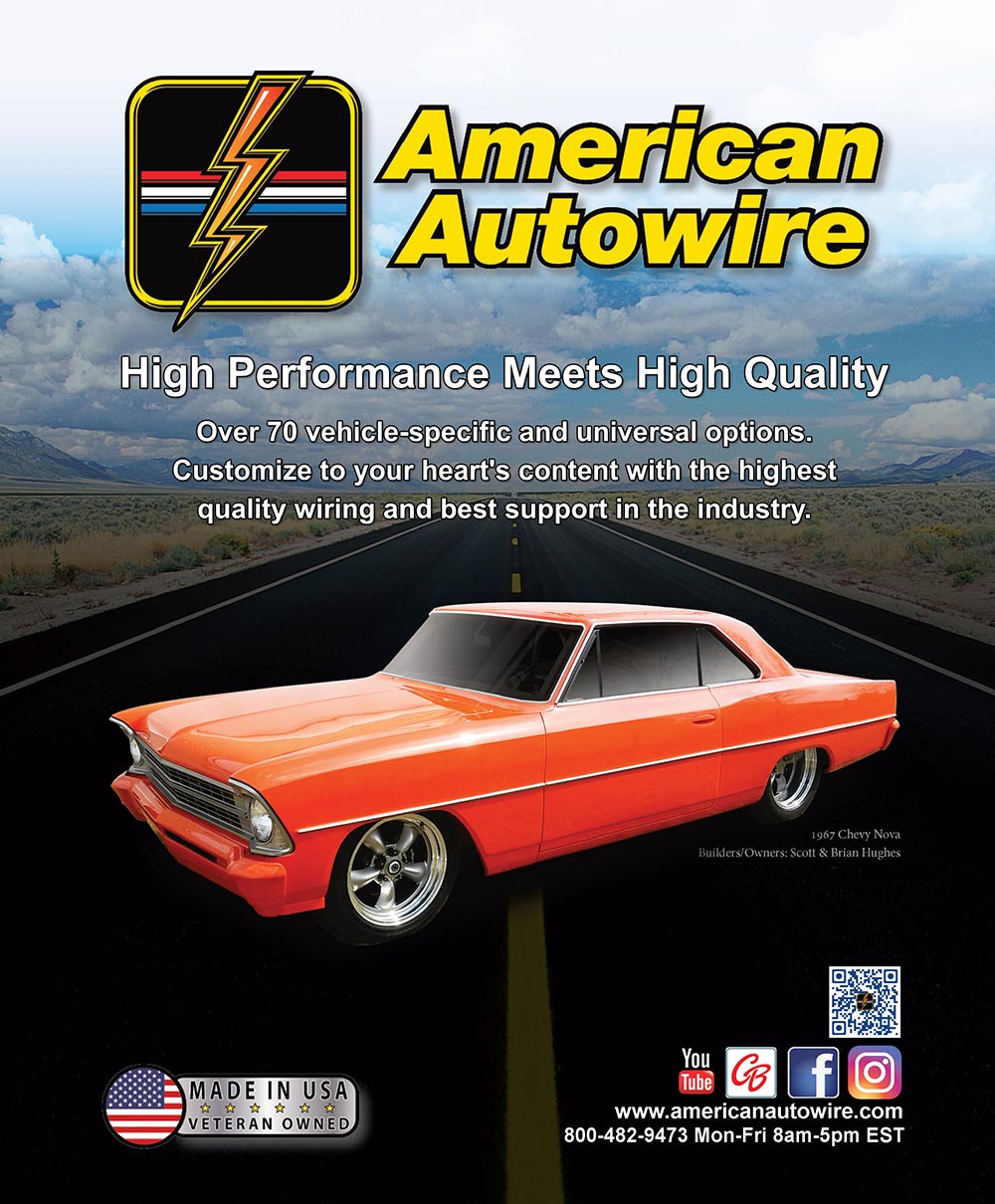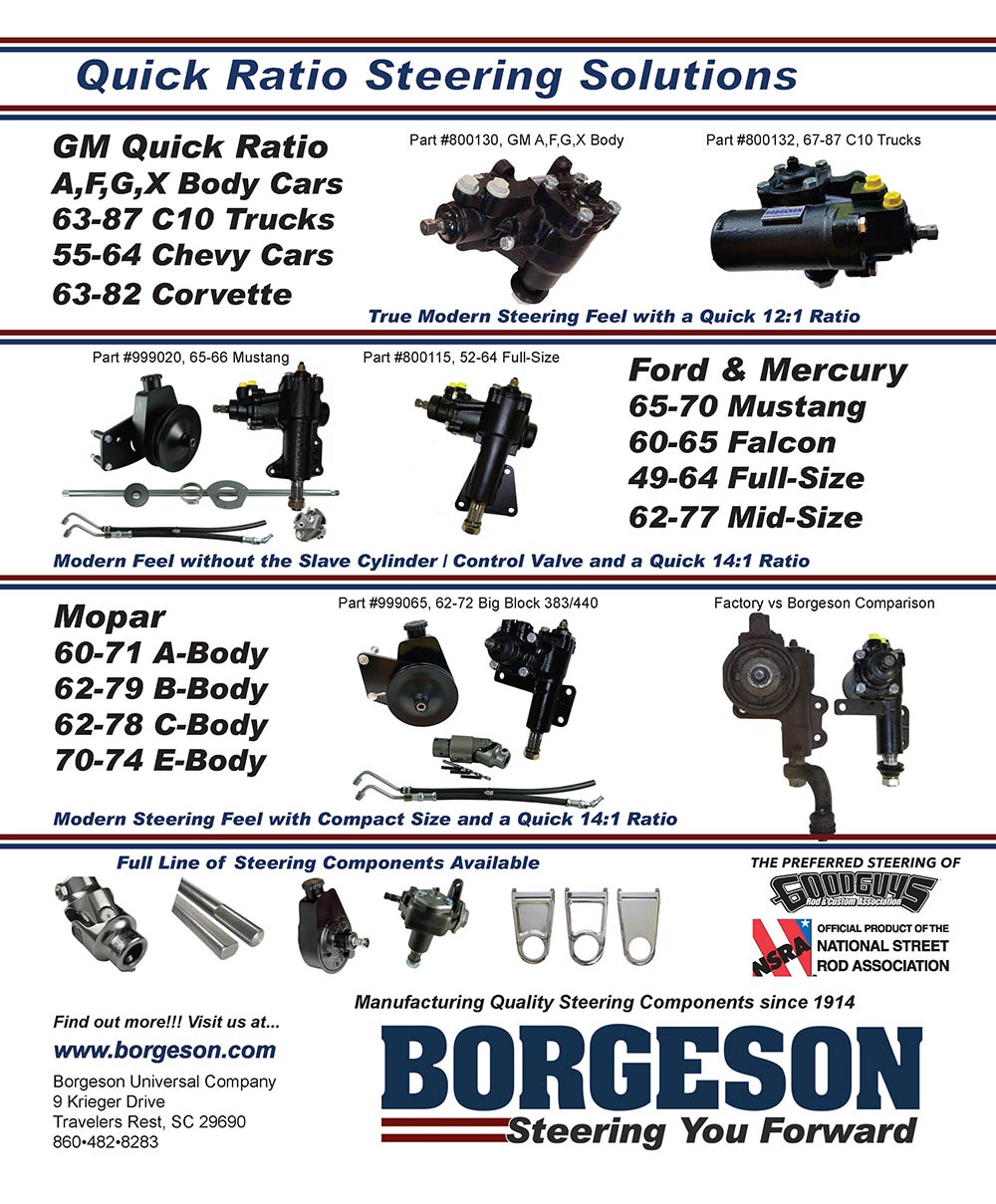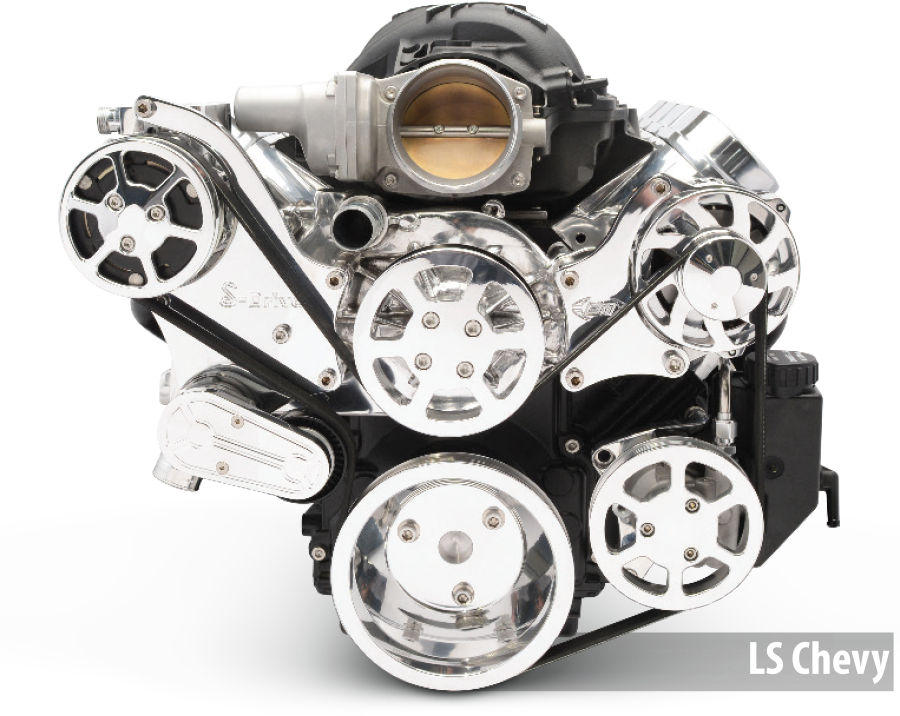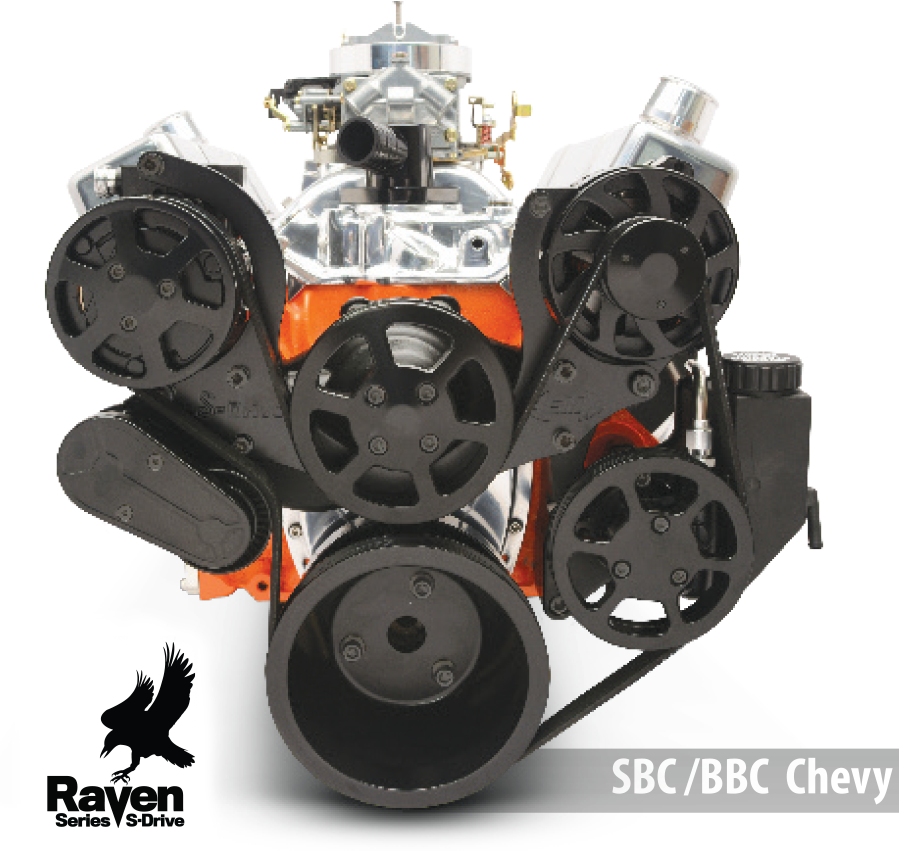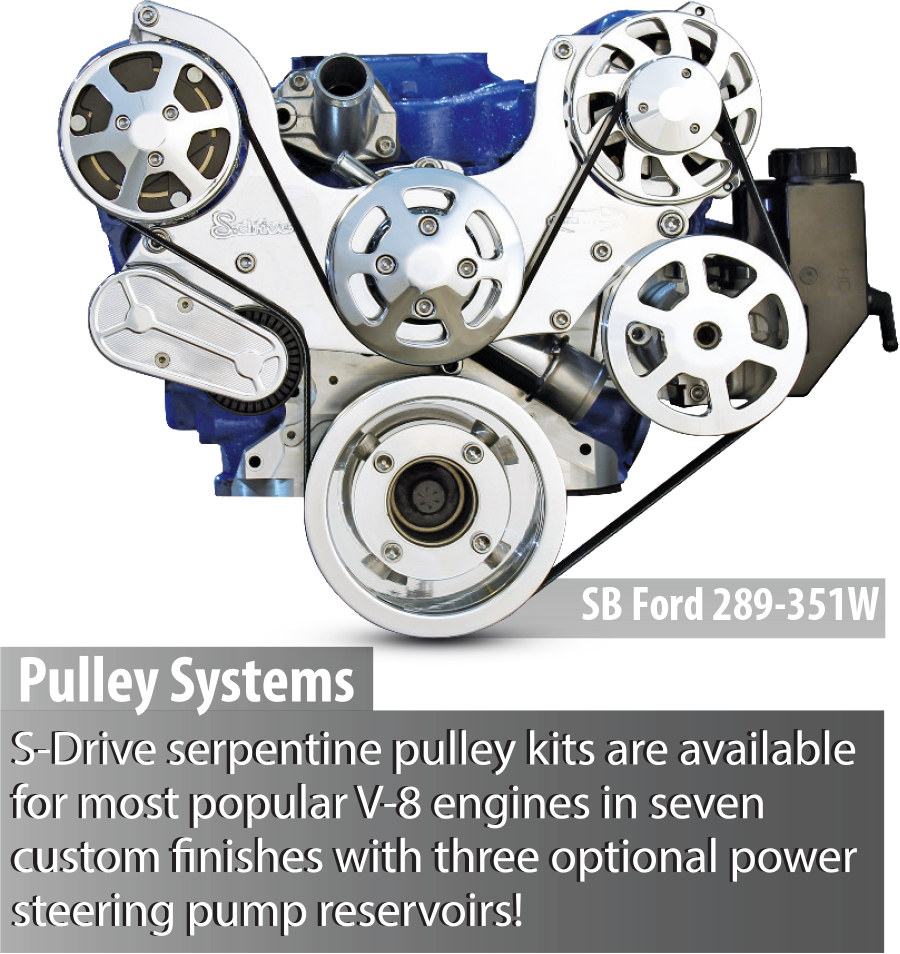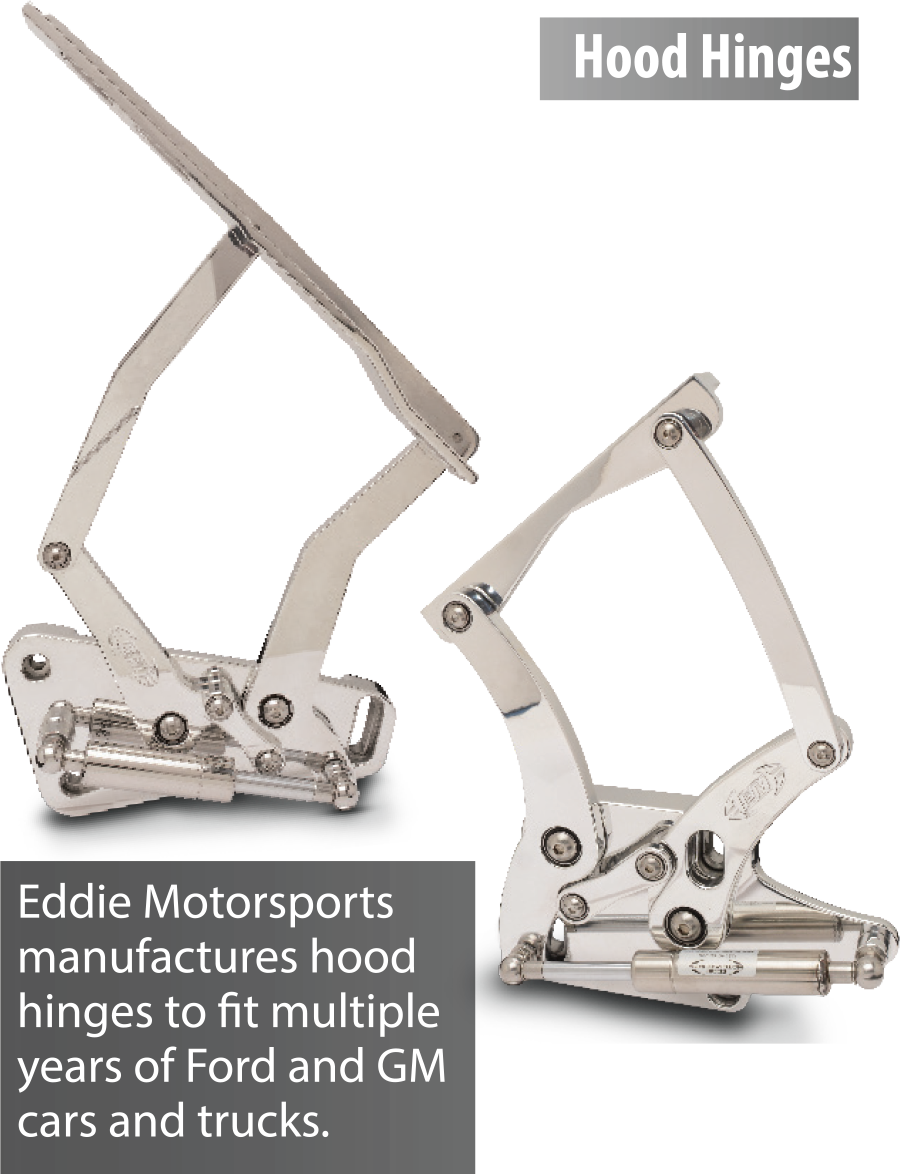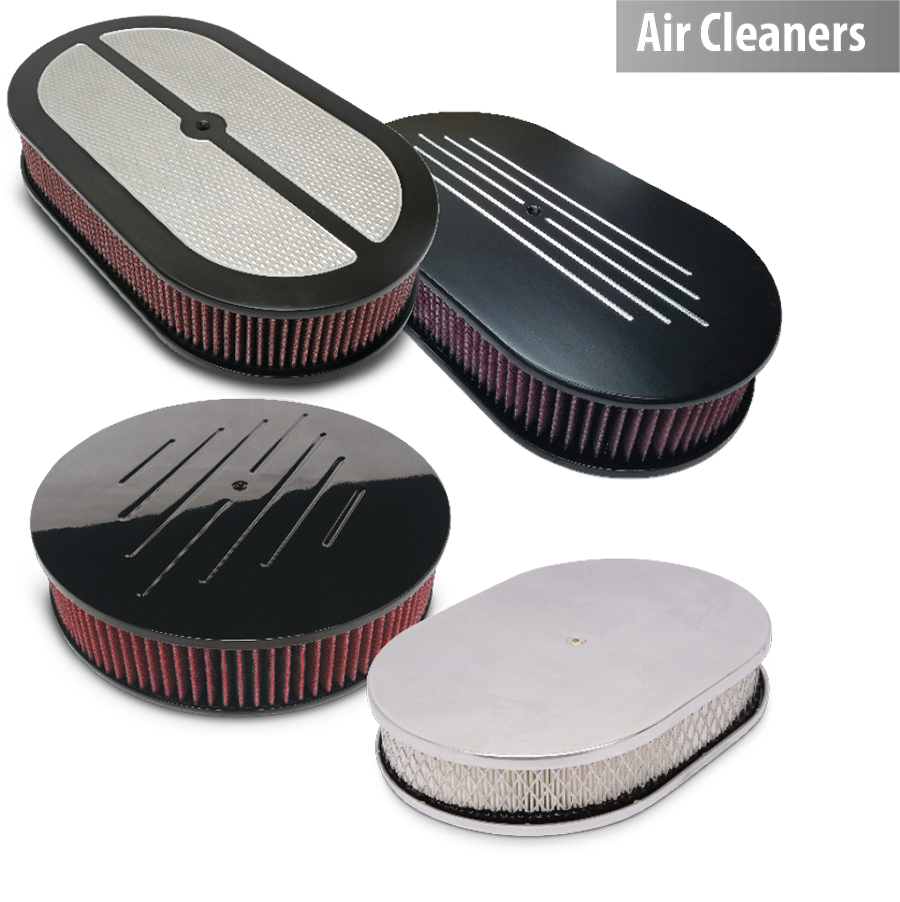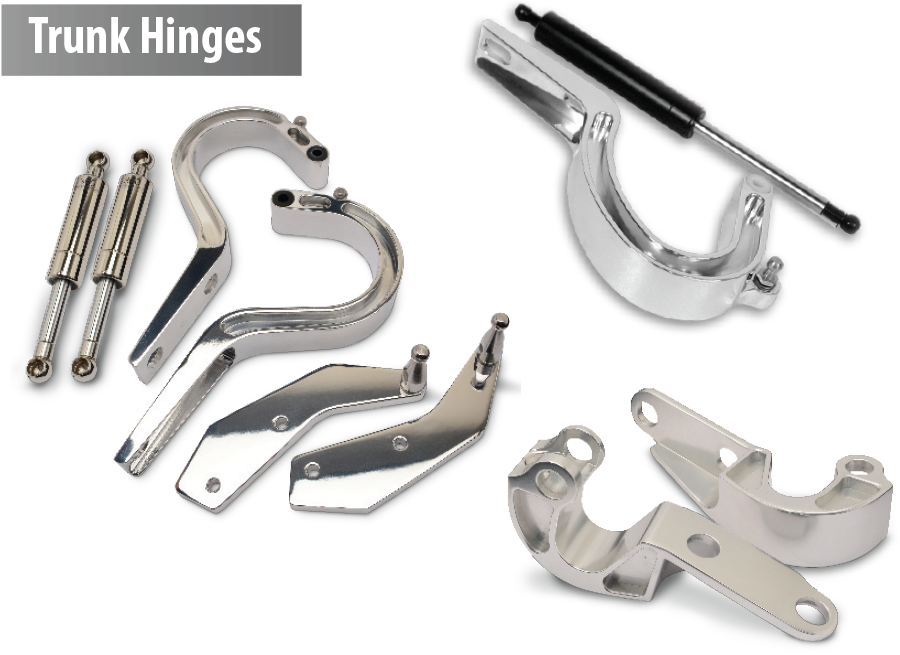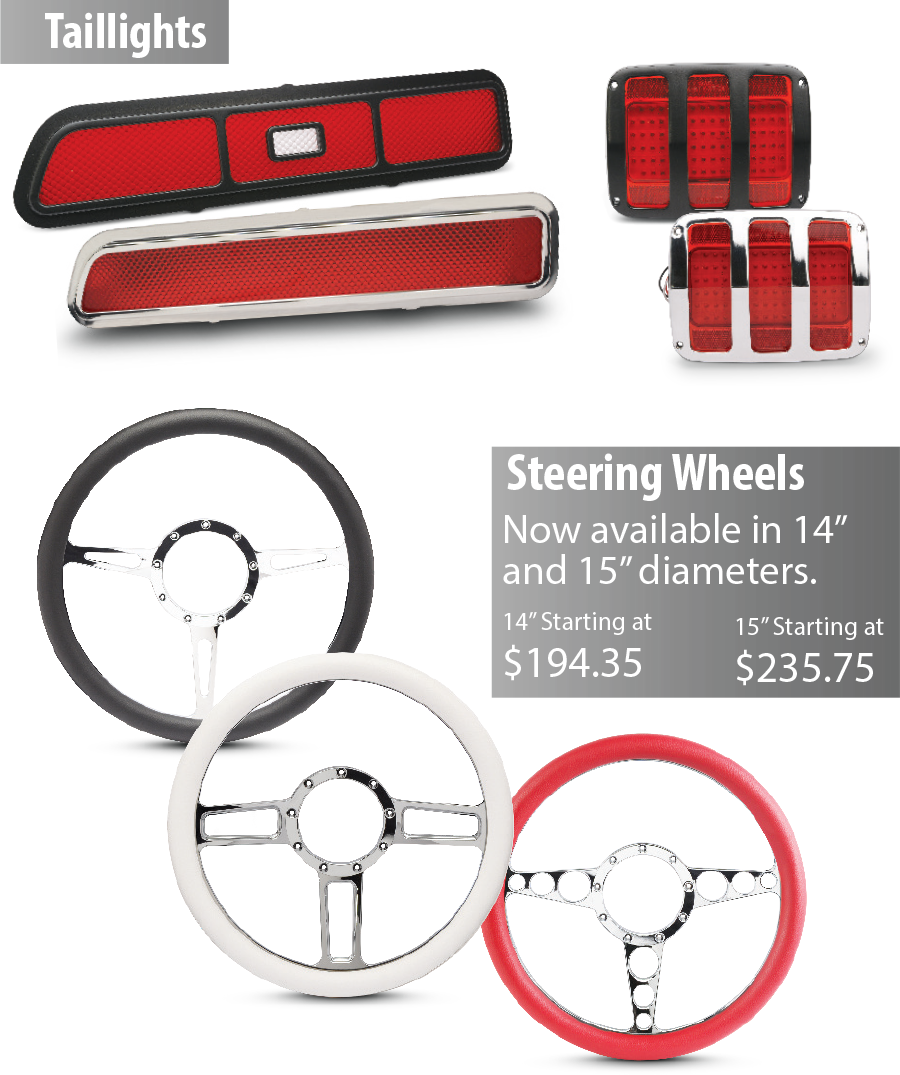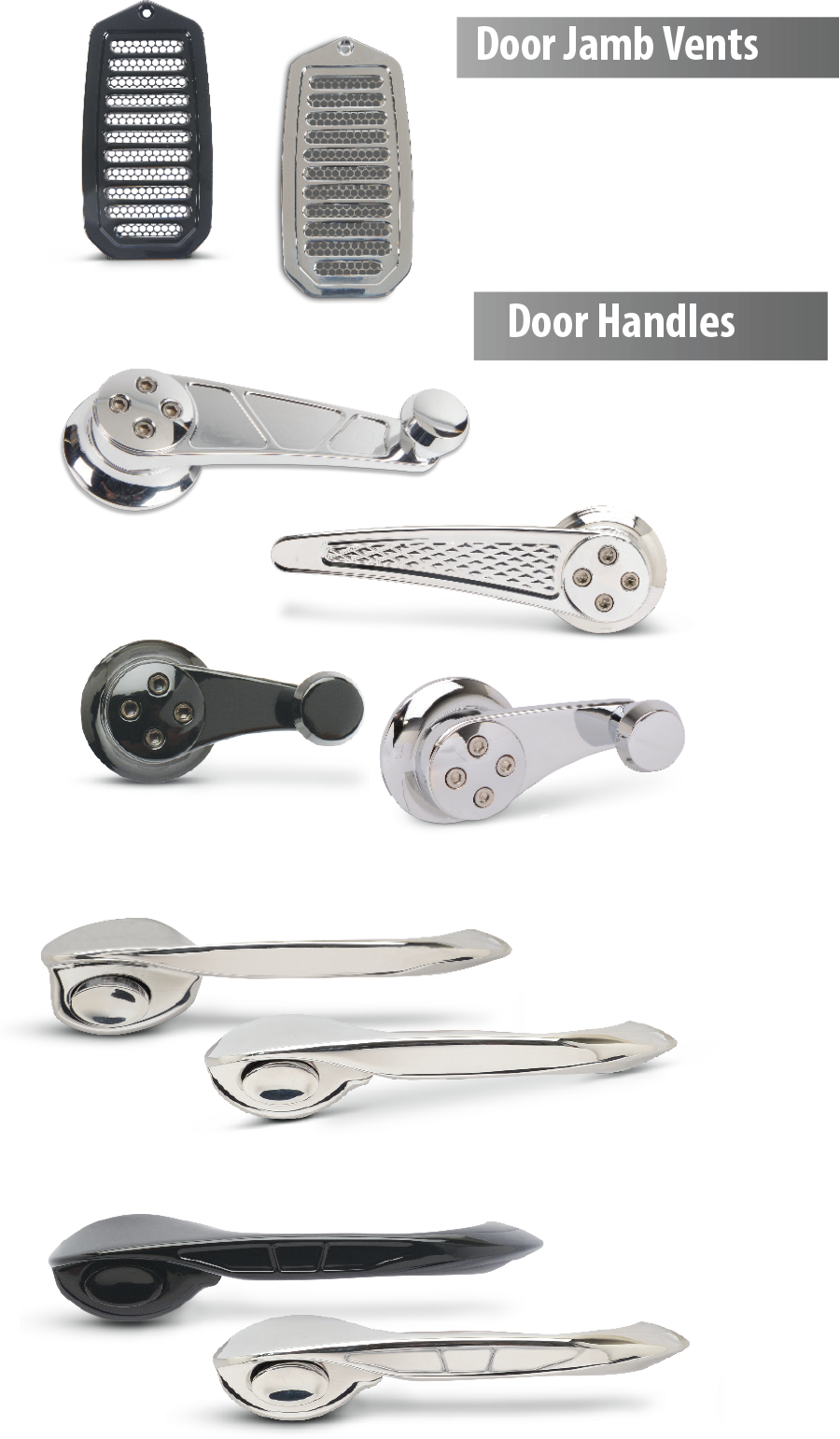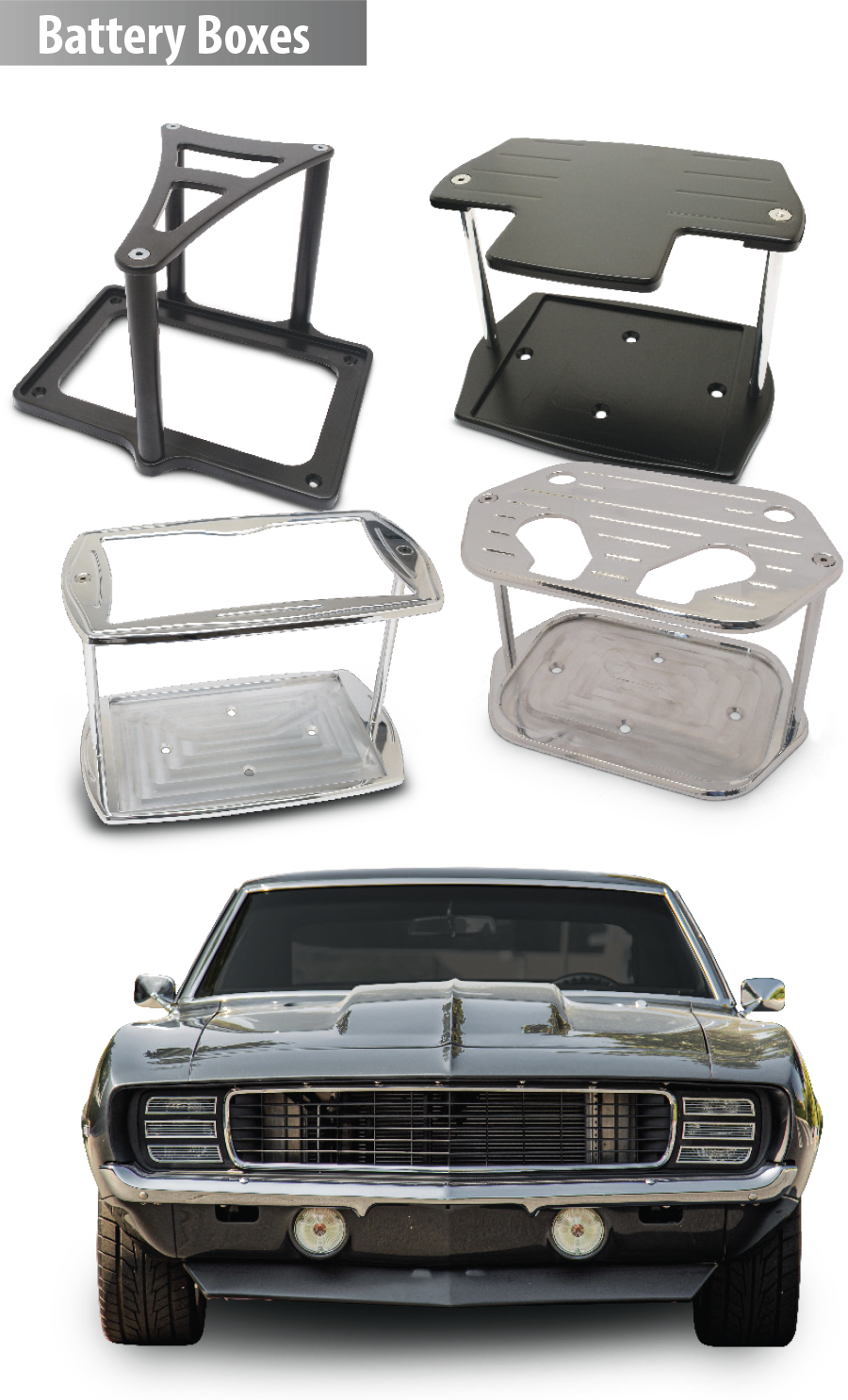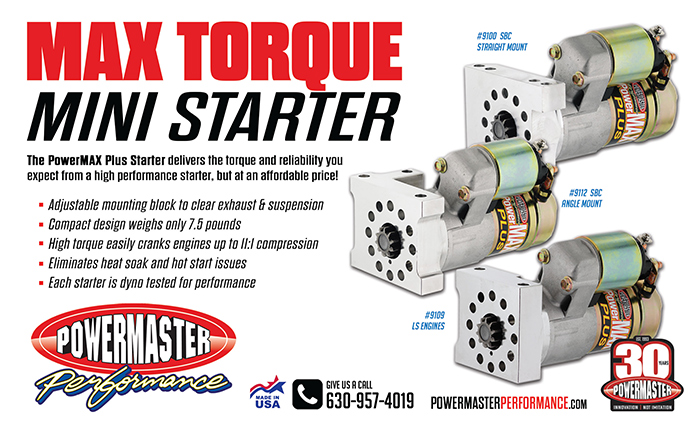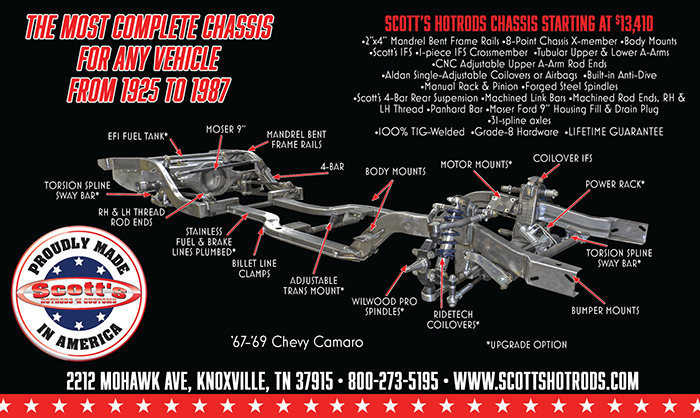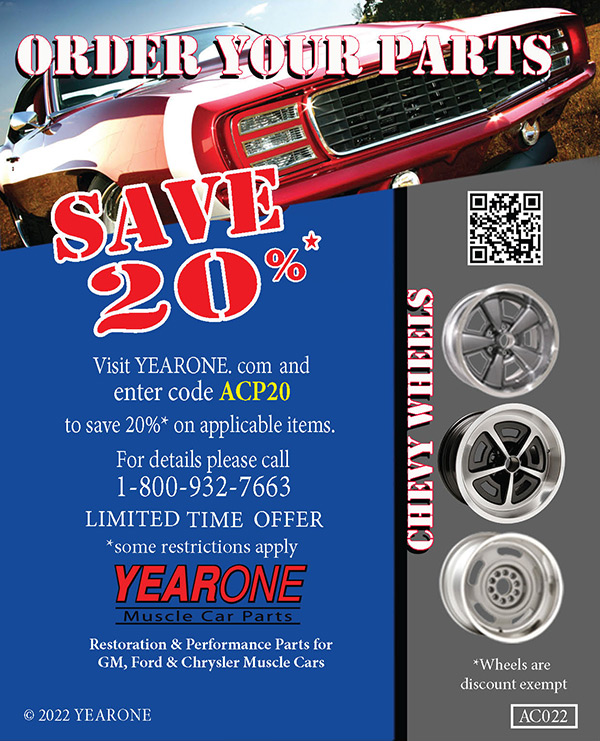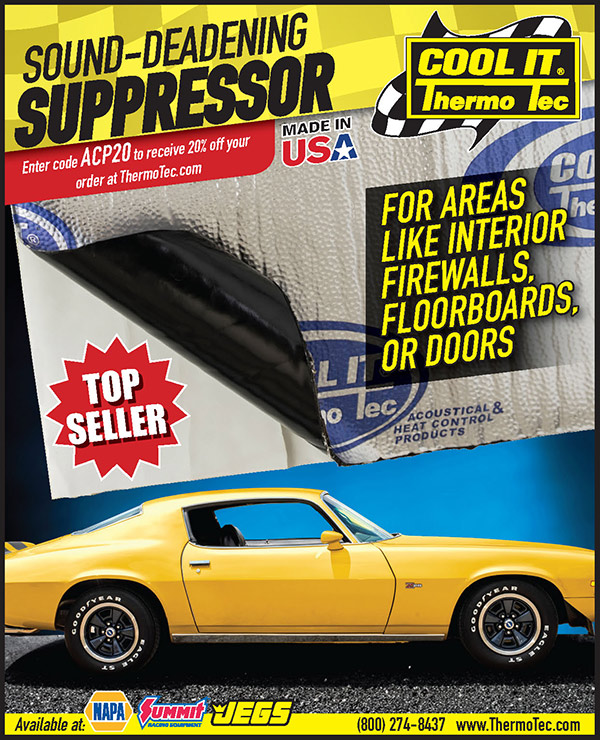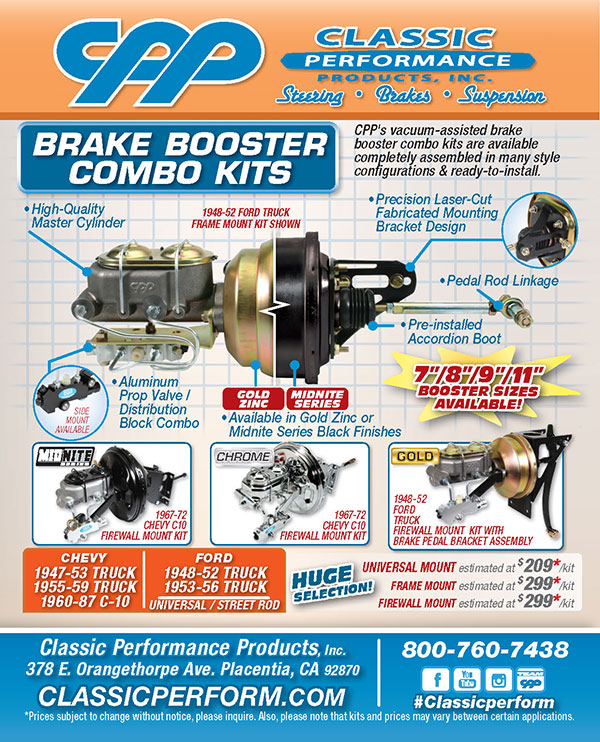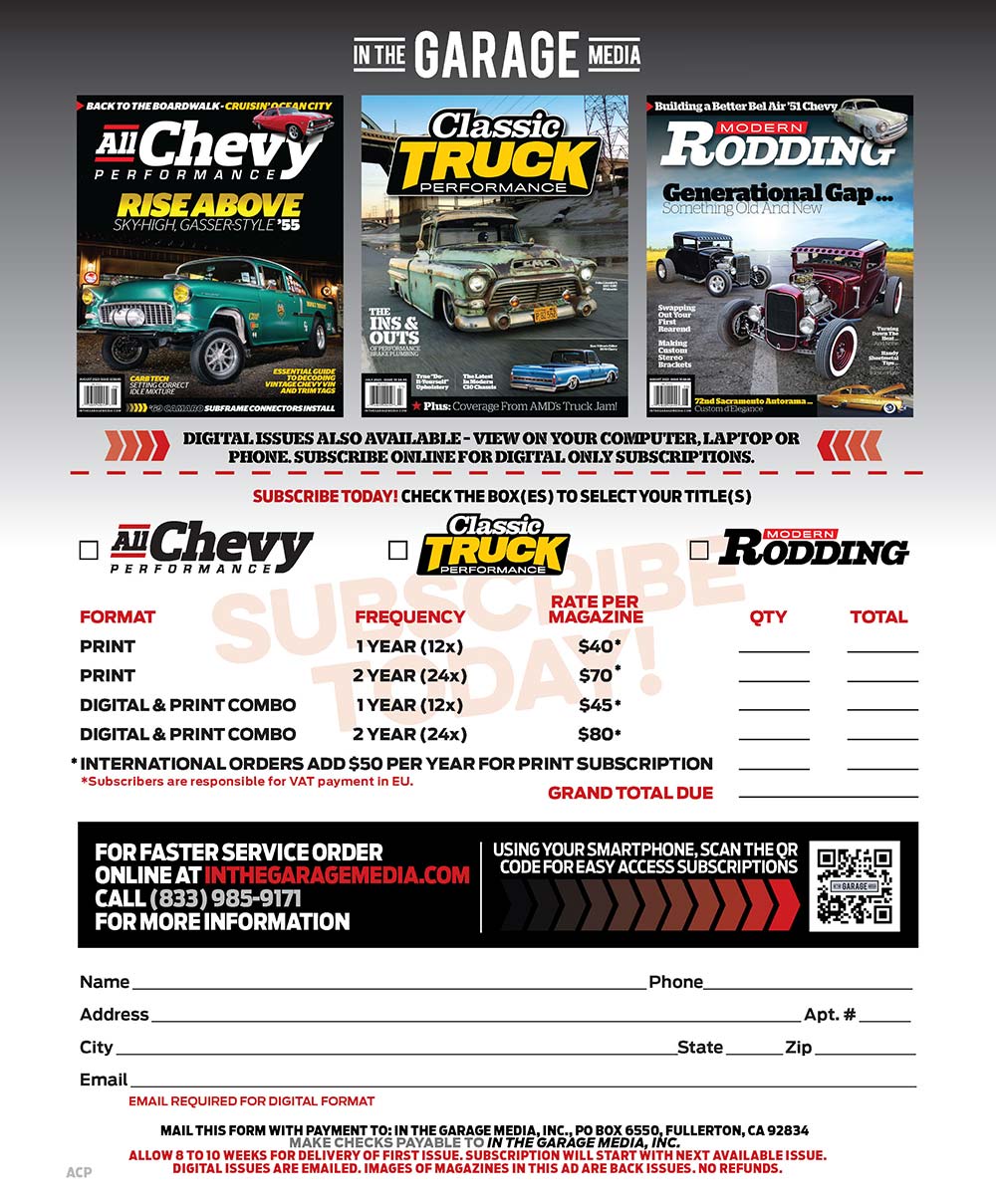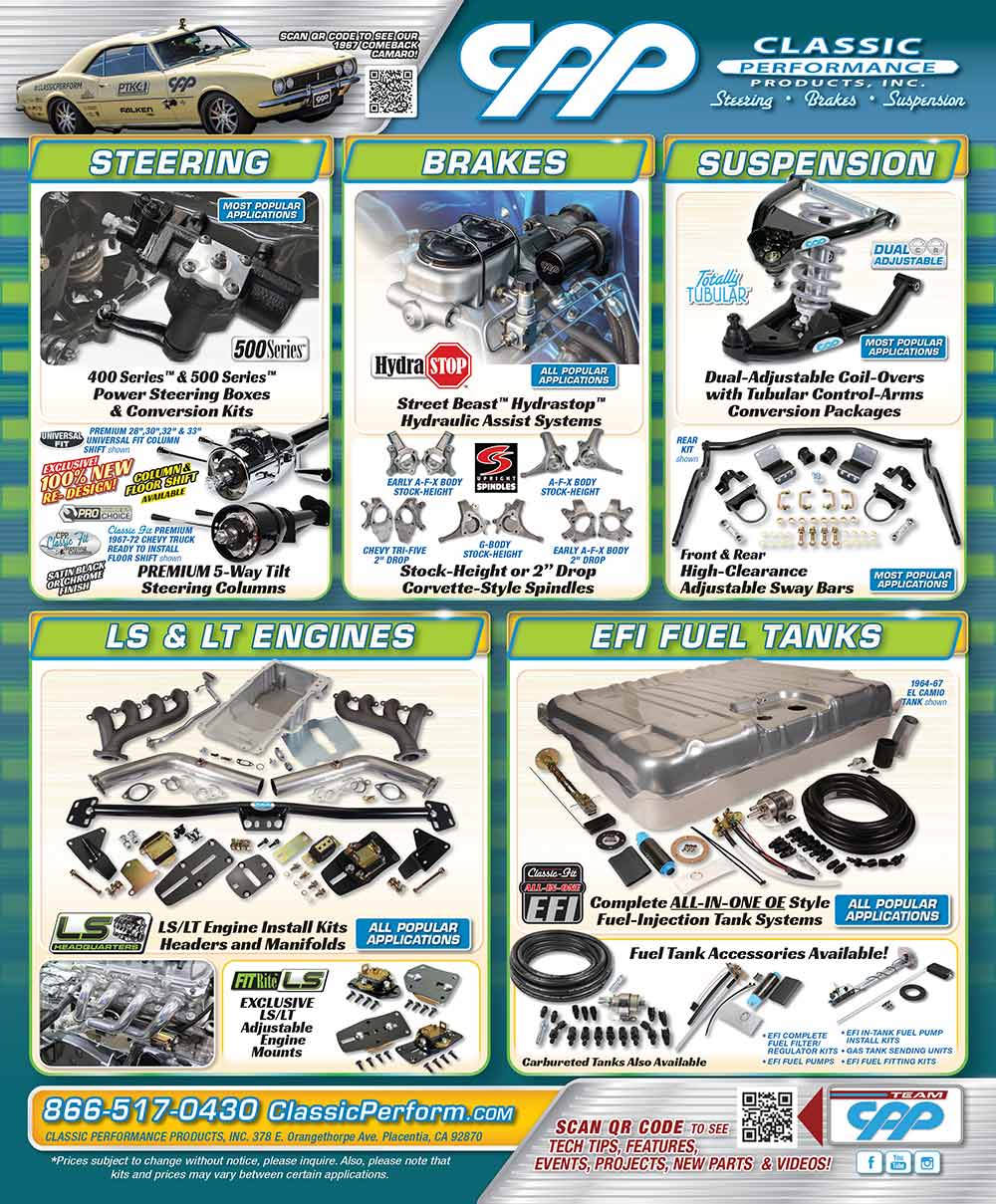 TOC
TOC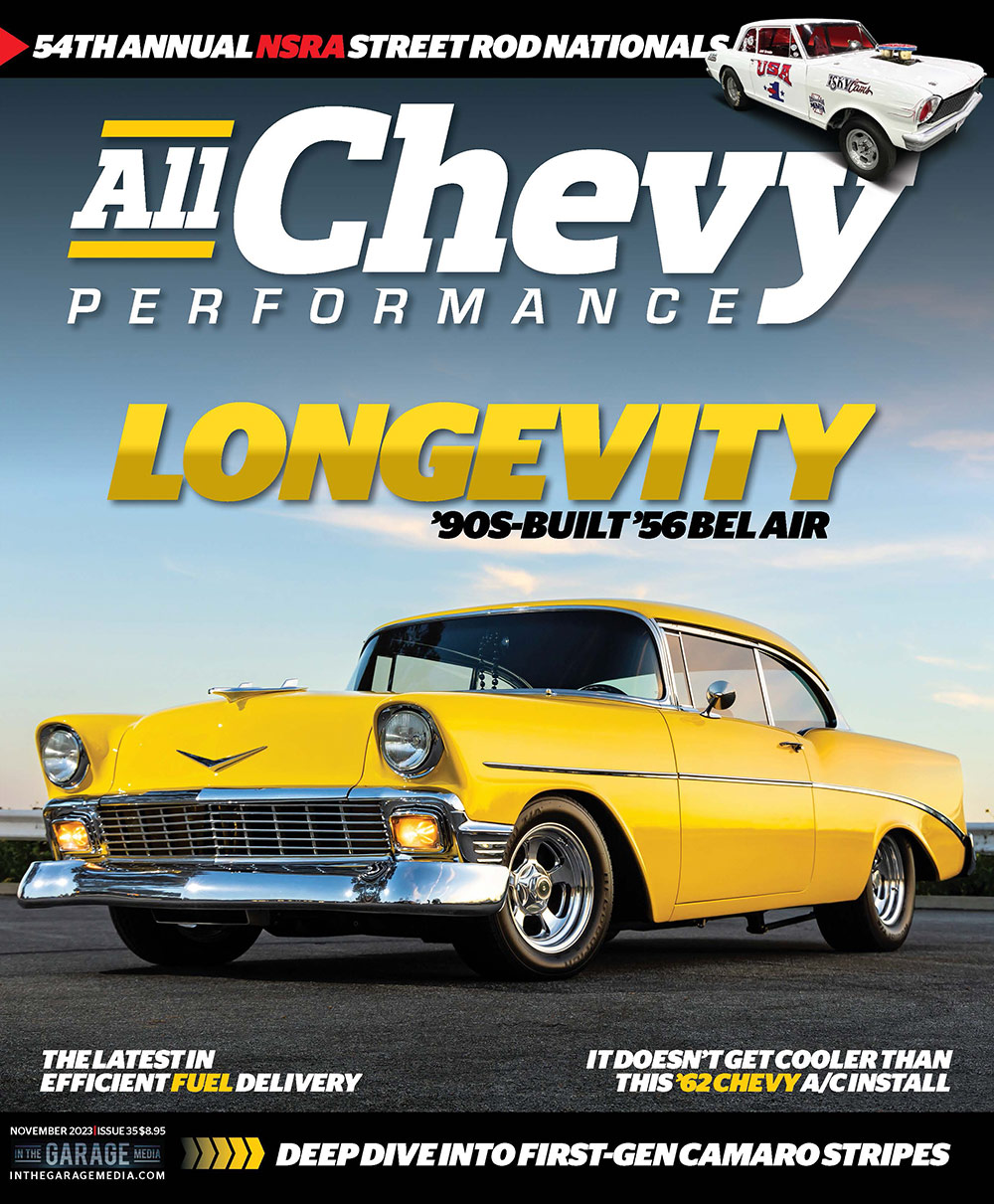


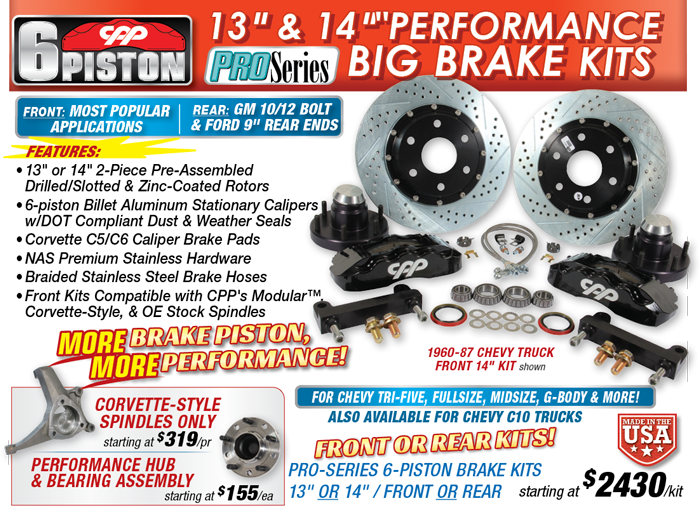
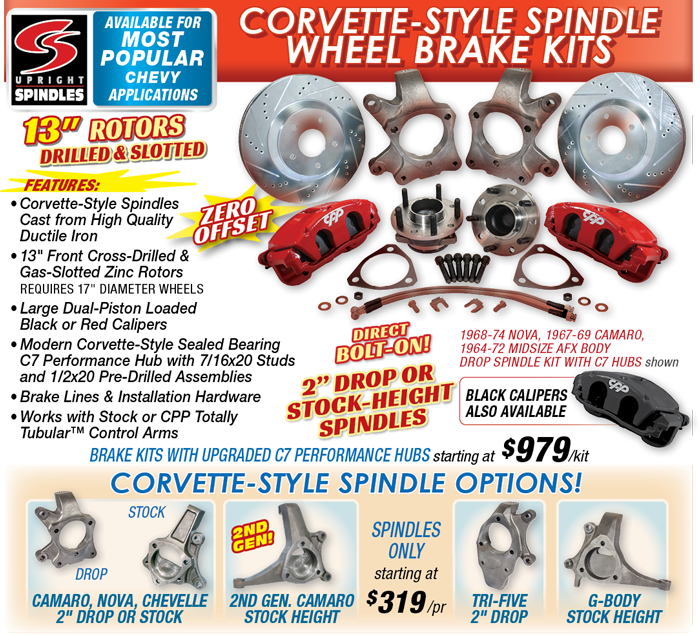
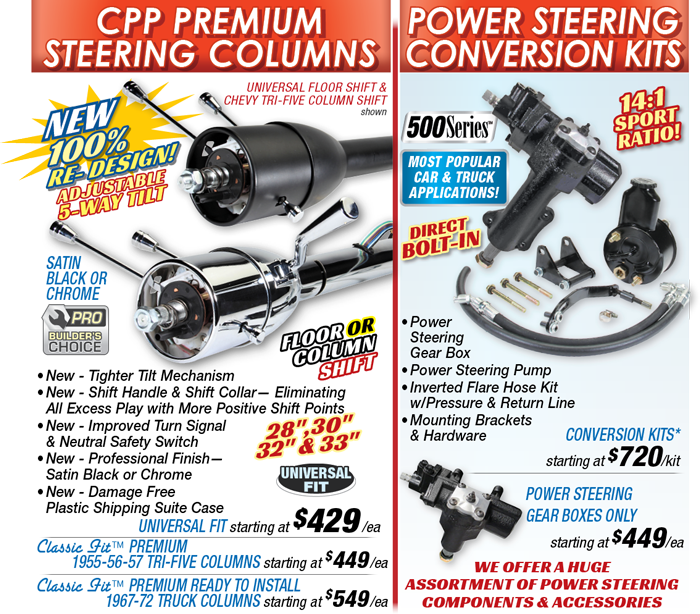
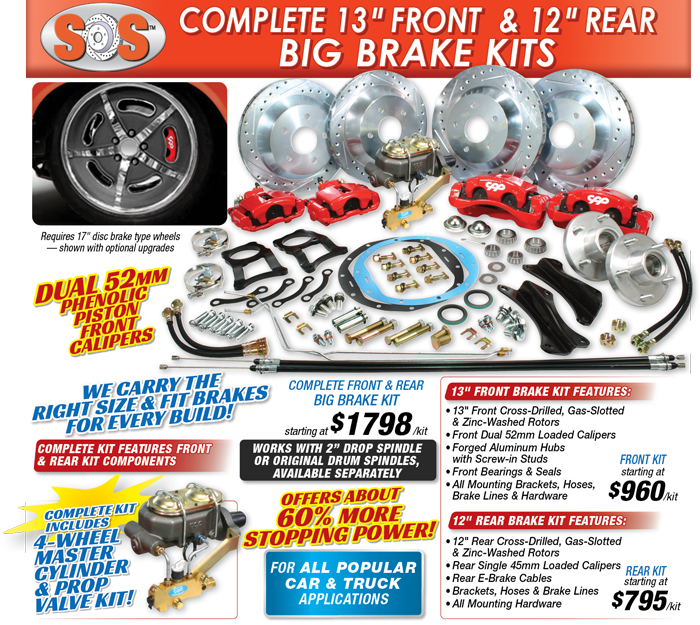


378 E. Orangethorpe Ave. Placentia, California 92870
#ClassicPerform

Wes Allison, “Rotten” Rodney Bauman, Shawn Brereton,
Tommy Lee Byrd, Ron Ceridono, Grant Cox, John Gilbert, Tavis Highlander, Jeff Huneycutt, Barry Kluczyk, Scotty Lachenauer, Jason Lubken, John Machaqueiro, Ryan Manson, Jason Matthew, Josh Mishler, Todd Ryden, Jason Scudellari, Jeff Smith, Tim Sutton, Wes Taylor, and Chuck Vranas – Writers and Photographers
Travis Weeks Advertising Sales Manager
Mark Dewey National Sales Manager
Patrick Walsh Sales Representative
ads@inthegaragemedia.com
AllChevyPerformance.com
ClassicTruckPerformance.com
ModernRodding.com
InTheGarageMedia.com
inthegaragemedia.com “Online Store”
For bulk back issues of 10 copies or more, contact store@inthegaragemedia.com
info@inthegaragemedia.com
Editorial contributions are welcomed but editors recommend that contributors query first. Contribution inquiries should first be emailed to info@inthegaragemedia.com. Do not mail via USPS as we assume no responsibility for loss or damage thereto. IN THE GARAGE MEDIA, INC. reserves the right to use material at its discretion, and we reserve the right to edit material to meet our requirements. Upon publication, payment will be made at our current rate, and that said, payment will cover author’s and contributor’s rights of the contribution. Contributors’ act of emailing contribution shall constitute and express warranty that material is original and no infringement on the rights of others.

Copyright (c) 2023 IN THE GARAGE MEDIA, INC.
PRINTED IN U.S.A.

 firing up
firing up
 BY NICK LICATA
BY NICK LICATA

eing an automotive magazine editor, I get quite a few letters and emails; some with constructive criticism, some requesting we do articles on a certain subject, some informing me that we don’t cover enough of a certain type of engine, some suggesting we feature more of this and less of that. I appreciate all those who take the time to write in with recommendations and requests as it helps me guide the direction of the magazine. And every now and then someone sends an email telling me how much they like All Chevy Performance magazine and that we are doing a good job. I appreciate those, too. There’s absolutely no way to make everyone happy but keep those emails coming and we’ll do our best.
So, this leads me to a handwritten letter I recently received from a person who was incarcerated. The gentleman admitted to making poor decisions in the past and contributes that to being raised by a single mother and running around with the wrong crowd as a teen. Today he is working on turning his life around and mentioned that his subscriptions to All Chevy Performance, along with Modern Rodding and Classic Truck Performance, have inspired him to get his life back on track and to focus on taking his life in a more positive direction. I always had suspicions that hot rodding was a great way to stay out of trouble even though hot rodders of the ’50s were deemed as rebels and a menace to society. It was definitely a simpler time when one of the biggest threats to society was those damn kids revving the engines in their hot rods and making all kinds of noise.
The letter goes on to explain that he has applied to and been accepted to college. He points out how our magazines influenced him to follow a clear path toward fulfilling a lifelong dream of building a vintage muscle car—a Cortez Silver ’69 Camaro with a bumblebee stripe, to be exact. Like many of us who grew up in the muscle car era, it was those late-’60s and early-’70s cars that stuck out to many of us as being the coolest cars ever.
 PARTS BIN
PARTS BIN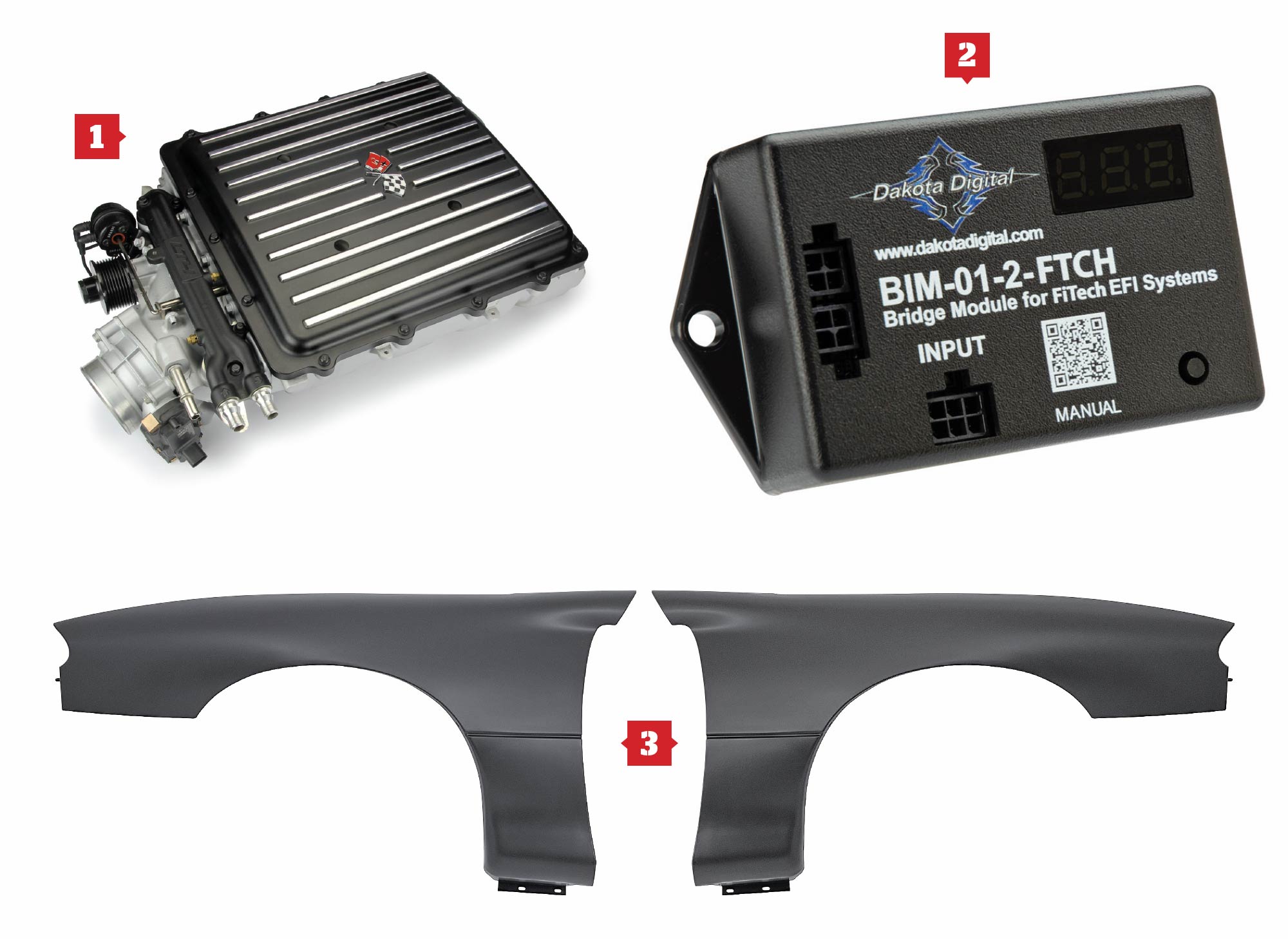

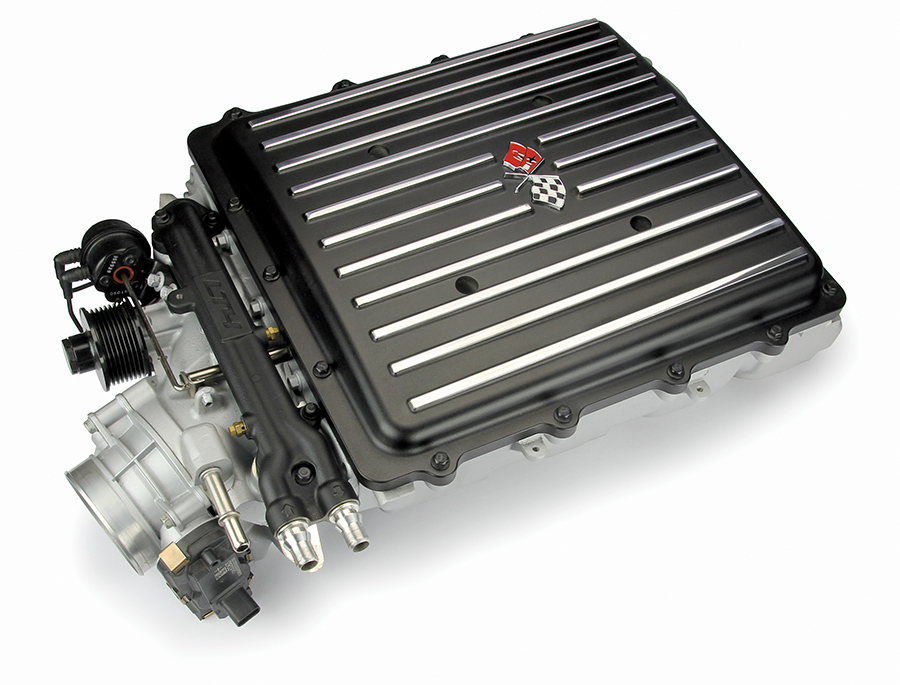
 CHEVY CONCEPTS
CHEVY CONCEPTS
 Text & Rendering by Tavis Highlander
Text & Rendering by Tavis Highlander

his second-gen Camaro build checks off all the boxes and then some. The first hit is the overall look of the exterior: low and mean. A dark, desaturated blue body color combines with black accents and soft gold wheel centers to create a look of its own. Closer inspection shows off many of the handcrafted features that add to the character of the car. The hood, front nose, front valance, and rear spoiler are all made in sheetmetal. The rear fenders have even been gently reshaped to allow for the massive rear tires.
The exterior of the car has been sculpted by hand and the mechanical bits have received a similar level of attention. A Nelson twin-turbo LS has custom plumbing and exhaust to integrate it into the engine bay as nicely as possible.
 FEATURE
FEATURE
 Photography BY Wes Allison
Photography BY Wes Allisonom Schauppner’s roots into hot rodding dig way back to the mid ’60s when he was a self-described 15-year-old hellraiser. “Starting out in Huntington Park, we eventually moved to Newport Beach, California, in 1961. Just about every teenager in my neighborhood had a hot rod of some sort. My buddy, Tom Hargraves, got me into cars. He had a ’57 Chevy and I’d help him wrench on it until I got a cool hot rod of my own—a ’55 Chevy I bought without telling my parents,” Tom reveals. “The deal was short-lived, though, as my parents weren’t big on me having a car like that at the time, so my dad made me sell it back the next day.”
Not one to give up easily, Tom bought a ’56 Chevy from a friend not too long after, only this time he rented a garage a few miles away in Costa Mesa to work on the car without his parents’ knowledge. Eventually, his dad found out about the car once it was revealed Tom was carrying a zero balance in his bank account. “My dad figured out where the money went, and surprising to me, told me to bring the car home and then helped me finish it,” Tom says. “I raced it on weekends and every chance I could, but that reckless behavior drove my mom crazy as she was totally against the whole thing.” Ironically, Tom’s car got a lot of attention around town and at dragstrips like Lions, Fontana, and others, which led to his car making the cover of the Apr. ’65 issue of Popular Hot Rodding magazine.
 TECH
TECH

 Photography by ACP Staff
Photography by ACP Staffftermarket LS accessory drive systems are nothing new, but they play an important role in making our engines look better and perform better, especially when increased horsepower is part of the equation. No doubt we all want our engines to look as good as possible and the fine folks at All American Billet offer front drive system kits for a variety of engines, but for this article we’ll be focusing on their billet serpentine system for LS Gen III- and Gen IV-style engines. While All American Billet offers machined, black anodized, and Silverline Series, this particular system is the polished kit for those wanting to liven up the front end of their LS engine with a little pizazz.
While it looks 100 percent more attractive than the stock GM system, the six-rib Gates belt system offers the ability to handle that extra horsepower you’ve added without belt slippage that is common with high-performance engines.
As mentioned, All American Billet offers systems for Chevy small- and big-block as well as systems for Ford and Chrysler engines. With a variety of finishes, there’s sure to be something to fit the style you are after for your ride.
 Feature
Feature
A Simple Paintjob Turns Into an Extensive Build for This Killer ’69 Camaro
 Photography by THE AUTHOR
Photography by THE AUTHORroject cars can be tricky. Gearheads always have good intentions but often lose track of time when it comes to upgrades and improvements. A 30-minute job turns into a weekend of torture, and we all know that winter projects are rarely finished by springtime. For Wade McDaniel and his ’69 Camaro, the snowball effect is much more dramatic. He bought it a few years ago as a completed car. It was an older restoration with some outdated modifications so he wanted to freshen it with a new paintjob and cosmetic updates. He contacted Barry Alford and Kyle Kirkman at Dynamic Speed & Custom in Gadsden, Alabama, to handle the job.
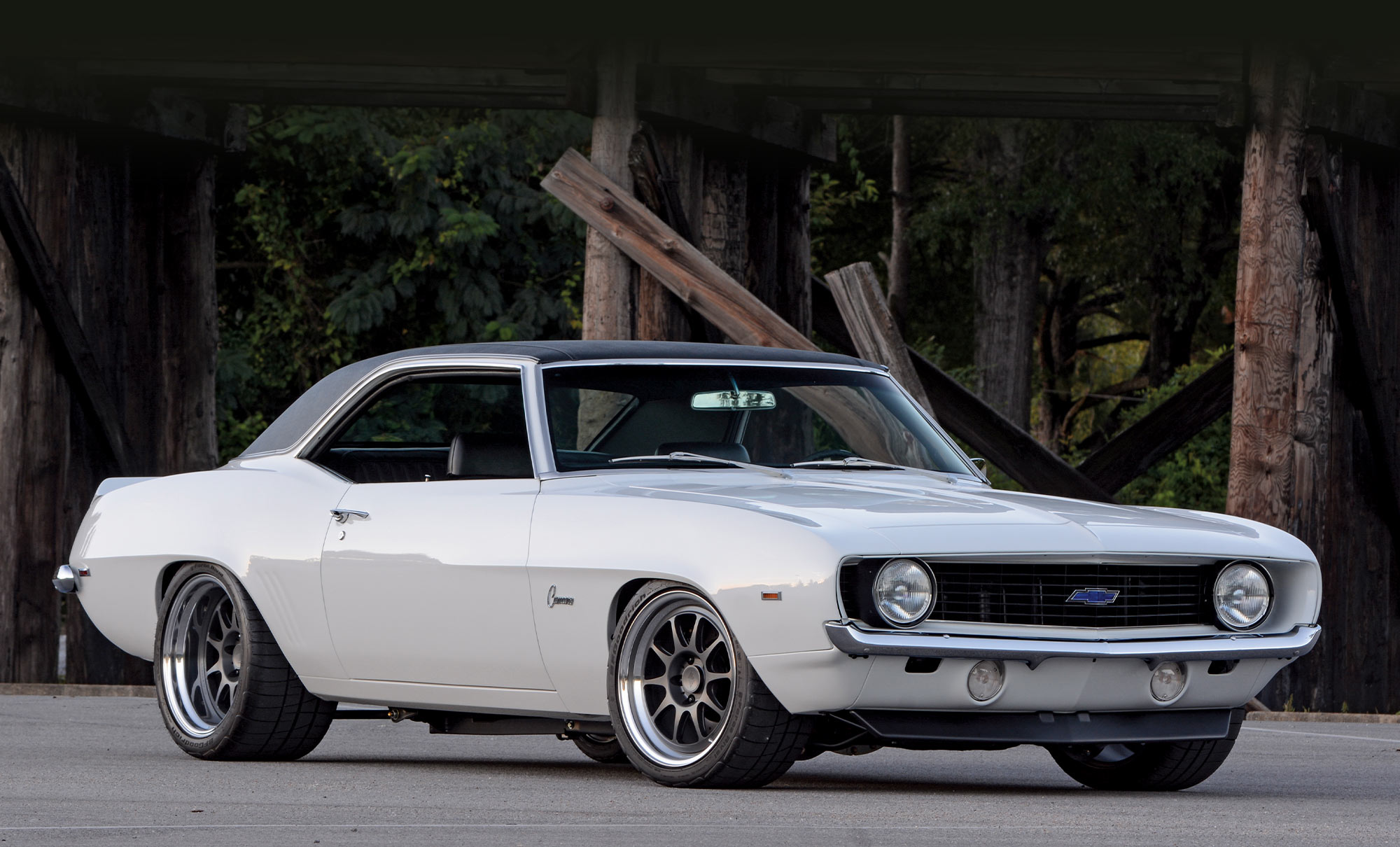
 TECH
TECH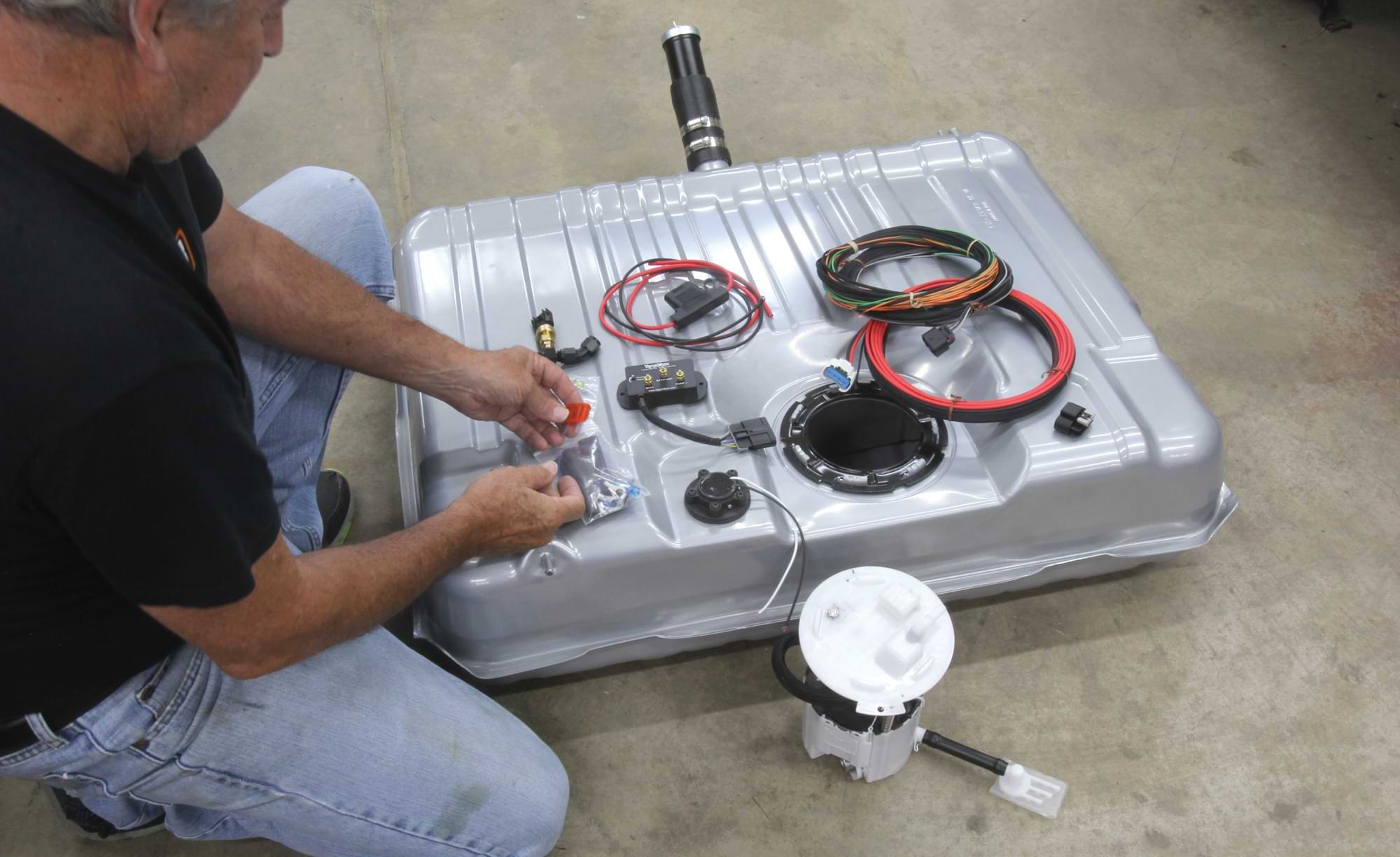
 Photography by The Author
Photography by The Authorhe horsepower race continues to escalate. We have production OE engines now achieving over 800 hp and Chrysler is now delivering a four-digit flywheel horsepower number straight off the factory floor. With these outlandish power numbers also comes increased demand for a high-performance fuel delivery system.
On the surface, the solution would seem fairly simple: just add a monster pump capable of delivering fire-hose-capacity fuel at the high pressure needed to feed an 800hp, supercharged engine. But add the requirement of a light-throttle cruise down the highway while knocking down 20 mpg and things become a bit more complicated. In the past, this demanded a return system that could bypass a large amount of fuel returned to the tank.
What is rarely discussed is the fact that bypassing fuel increases the heat generated in the fuel, which generally creates multiple problems as fuel temperatures hit 130-plus degrees F on really hot days from multiple sources, including the heat reflected off the pavement. These high fuel temperatures often cause percolation and vapor lock problems. A typical distillation curve amply illustrates why gasoline functions much differently (in a bad way) at 130 degrees compared to 70 degrees F.
 Feature
Feature
 Photography by THE AUTHOR
Photography by THE AUTHORver the years many desirable muscle cars have been saved as a result of some form of racing, with drag racing arguably the biggest contributor. Luis and Boni Rosa’s ’67 SS Camaro falls into that category as a former quarter-miler. Their journey with this first-gen Camaro started as an object of desire—they knew the car and the owner but were never able to cut a deal for it.
The Camaro’s journey down the assembly line started in 1967 dressed in Bolero Red paint, black interior, and an L48 350 small-block mated to a four-speed. By the late ’70s it was seeing regular weekend track duty at places like Maple Grove Raceway. With each passing year, it crept further away from street trim and was eventually tubbed and caged with a very aggressive small-block underhood. Due to its uncivilized nature, street usage was very limited, however, there are always exceptions, and in 2008 the owner allowed his nephew to drive the car on the street and he ran out of talent and stuffed the front end.
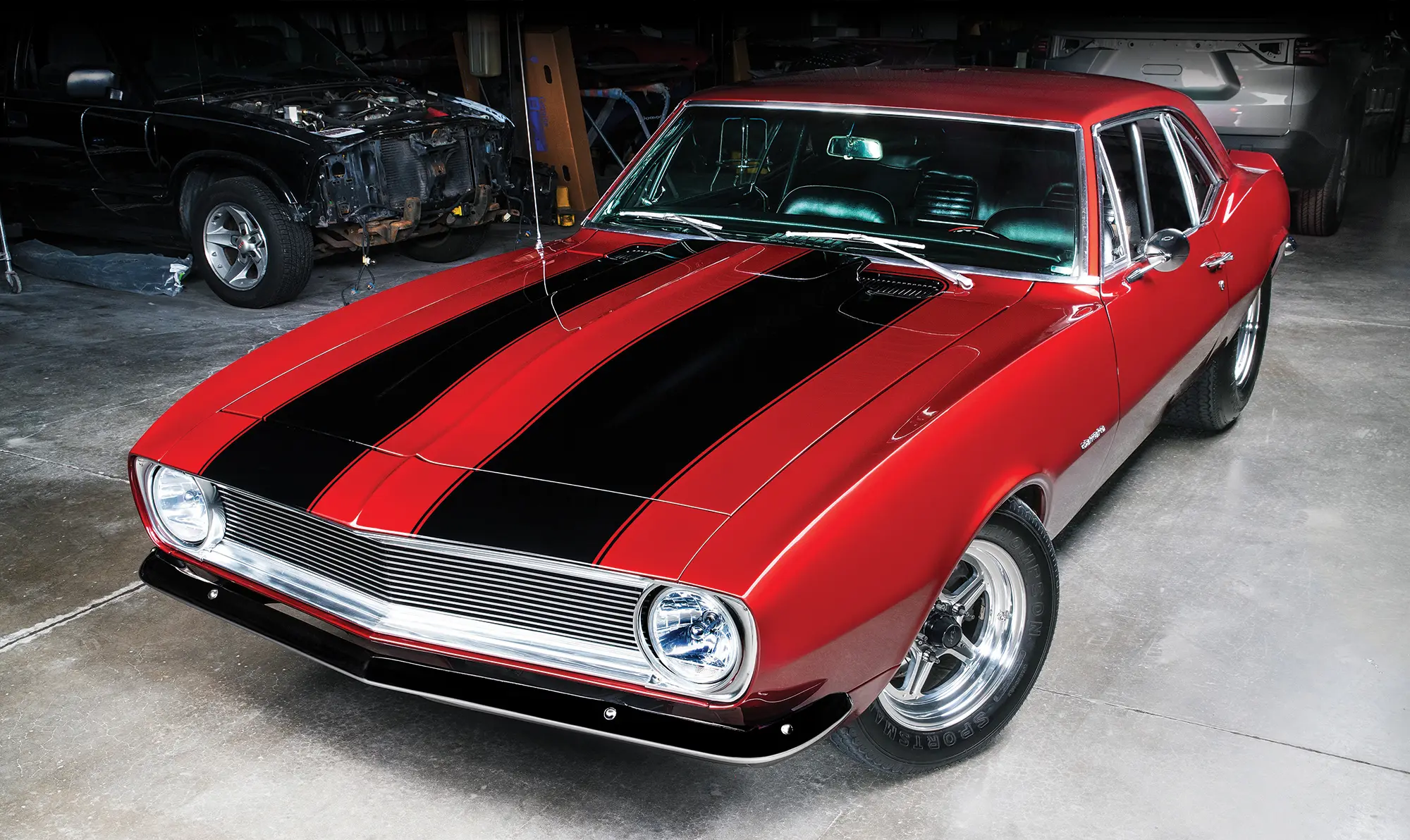
 TECH
TECH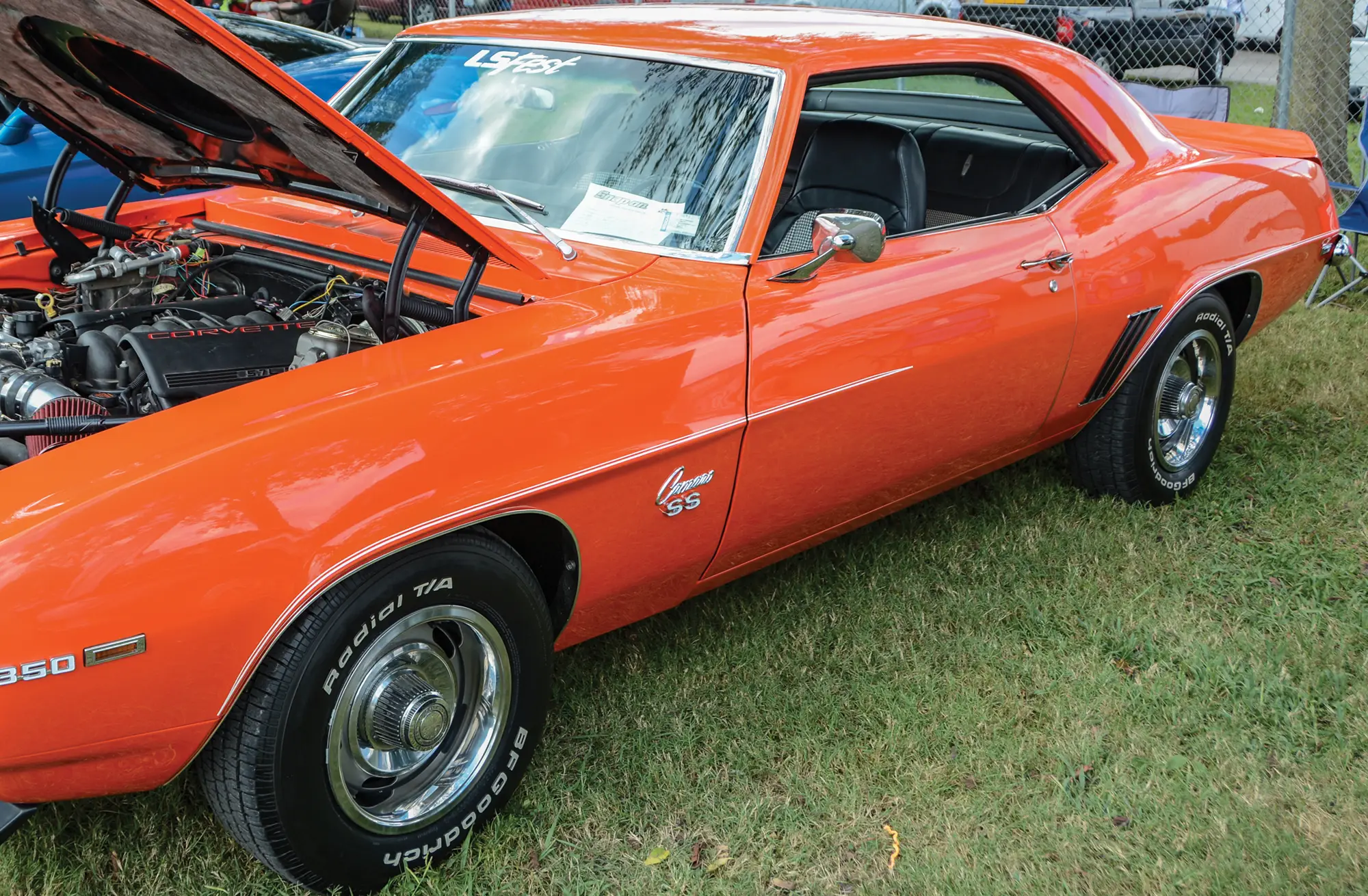
 Photography BY THE AUTHOR
Photography BY THE AUTHOR e all feel a connection with cars. Every one of them has a story. It’s why we write about them, and it’s why you buy this fine publication. Some are tedious to write, especially ones that were bought and just sit in a garage like a piece of jewelry. They are wiped down every now and then and maybe make it to the local cruise-in or ice cream shop, racking up a whopping 50 miles a year. No matter how much they cost, those cars have no soul. Those are the hard ones to write.
When Chevrolet rolled the Camaro out to the public, it was an opportunity to deliver a car with numerous appearance packages and option groups. New car buyers could opt for Rally Sport, Super Sport, or Z/28, and sometimes combine groups to create a truly unique Camaro. Even a base-model Camaro could be optioned up to appear a little fancier, thanks to option groups like Z21, which included wheel opening moldings, driprail moldings, and special painted pinstripes along the body line. Painted stripes quickly became a trademark of the first-generation Camaro, and several designs came into play during the three-year run.
 Feature
Feature Photography by THE AUTHOR
Photography by THE AUTHORhen Jeff Moyer was a kid, he brought model cars to school for show-and-tell and would peek at Hot Rod magazine during reading time. Jeff always seemed to gravitate toward Chevys, probably due to his dad’s taste. “My father’s garage included a ’64 SS and ’70 SS 454 Chevelle, a ’69 Z/28 Camaro, and a ’69 Nova L78 396. Though these were long gone before I was born, the pictures tell the story, and that Nova really did it for me,” Jeff recalls.
Jeff’s dad worked at a race shop just a block from their house, so from a young age Jeff was a “shop rat.” He’d hang out, soak in a bunch of knowledge, and later take what he learned to mold his career and personal car builds.

 TECH
TECHInTheGarageMedia.com
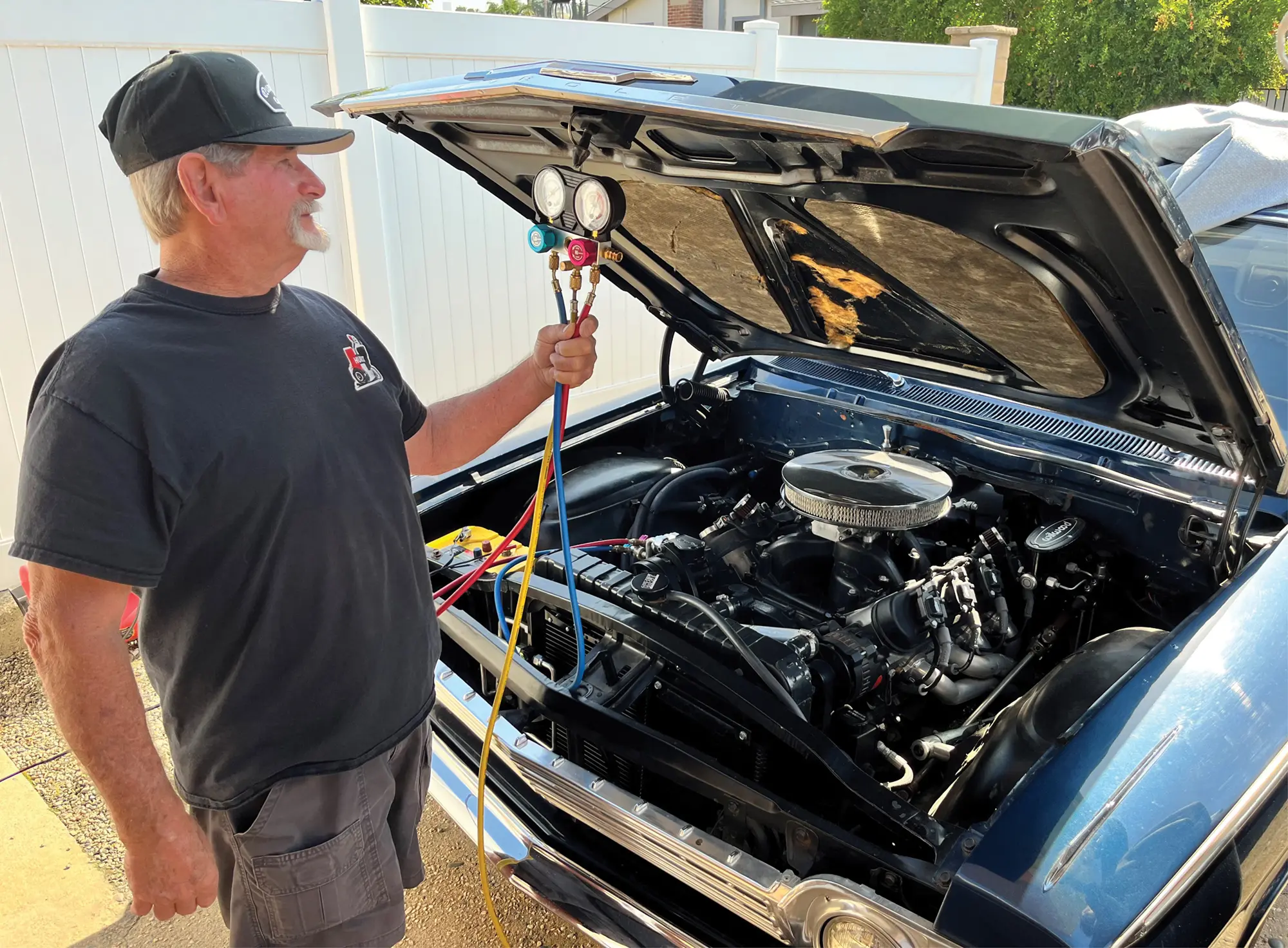

 Photography by Jason Scudellari
Photography by Jason Scudellarioday you’d be hard-pressed to find a new car without air conditioning, but in 1962 that wasn’t the case. That year a new Chevy Impala two-door hardtop sport coupe had a factory price of around $2,800, and adding DeLuxe air conditioning bumped the tab by over $360—that’s roughly 13 percent of the base price. As a result, lots of Chevy shoppers back then decided to tough it out and forgo the A/C and cope with hot days by rolling the windows down and turning the windwings out. Of course, all that did was funnel hot air into the passenger compartment, along with the occasional flying insect.
As far back as 1976, Vintage Air has been supplying universal aftermarket A/C systems to make it easy for enthusiasts to keep their early cars and trucks cool. Since then, Vintage Air has continued to incorporate the latest technology in their product line. As an example, at one time OEM and aftermarket climate-control systems used cables or vacuum motors to control the doors that directed airflow in the evaporator case—both systems had limitations due to the limited movement of those doors. Vintage Air’s Gen II and IV systems use fully electronic microprocessor-controlled servo motors to control the operation of those doors, which allows them to travel further. The results are dramatic gains in airflow, superior defrost performance, and true bi-level operation in both heat and A/C modes. Today that technology has been combined with Vintage Air’s SureFit vehicle specific kits that are complete, bolt-in climate-control systems that require no significant modifications to the car (some holes may have to be drilled).
 Feature
Feature
 Photography by John Jackson
Photography by John Jacksonot many of us can say we are still in possession of our very first car, and even fewer can state they got said car when they were just 14 years old. Well, Jason Schultz, a Collinsville, Oklahoma, resident who recently turned 50, checks both boxes when it comes to his ’71 Chevelle. As a young teen he became the recipient of the car that was handed down by his great-grandmother who purchased the car brand new off the showroom floor from Bill White Chevrolet in Tulsa, Oklahoma. She used the car as a grocery getter for years, but according to Jason she also had a heavy right foot. “I remember her leaving our house and she would get in the car, floor it, and yell ‘bye-bye butthole,’” Jason laughingly says. “I can’t help but think about that every time I get in the car.”
 EVENT
EVENT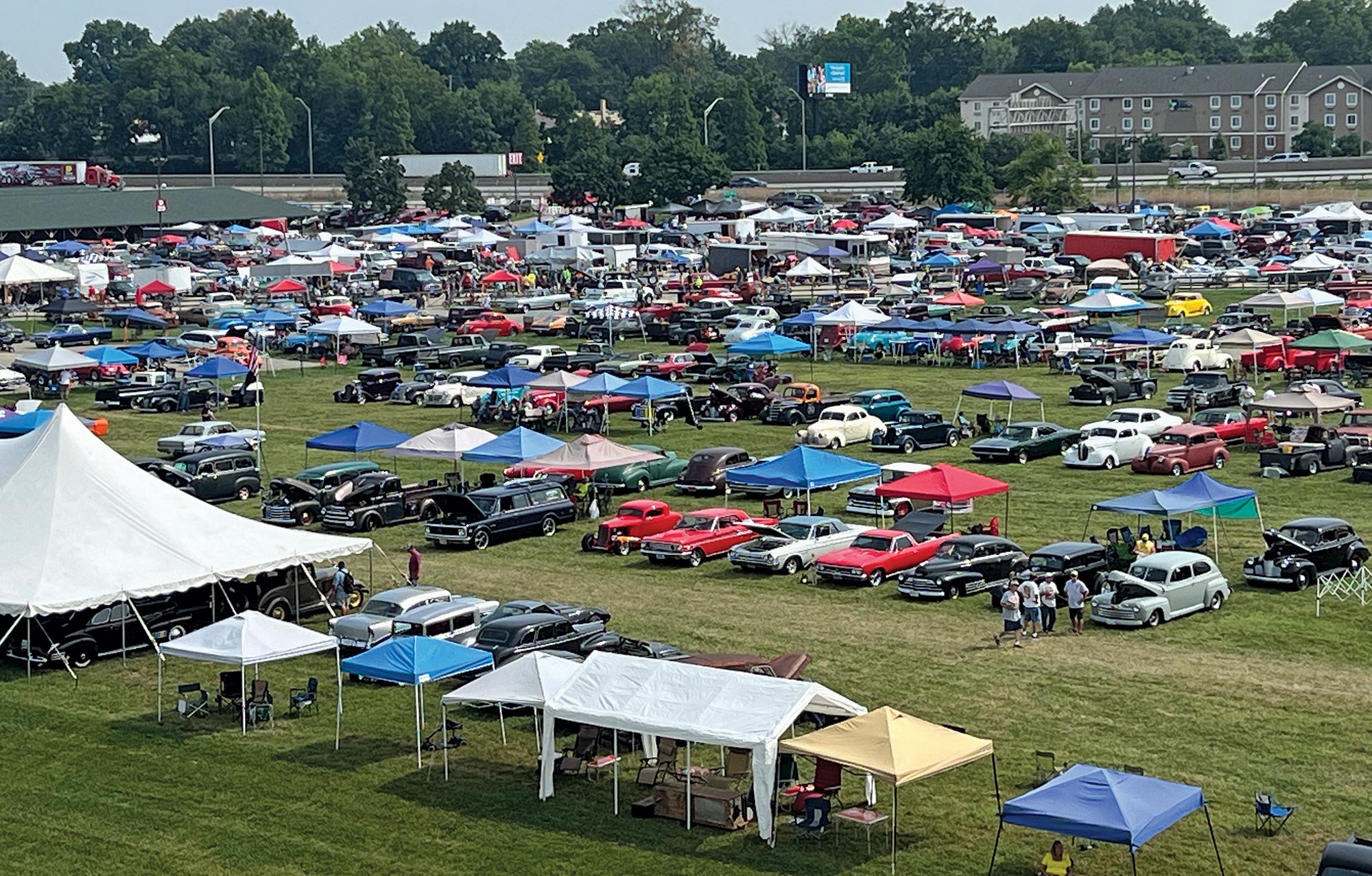
 Photography BY THE AUTHOR
Photography BY THE AUTHOR t was great to make our annual trip back to Louisville, Kentucky, for the NSRA Street Rod Nationals. This year celebrates the 54th edition, which was held August 3-6 at the Kentucky Exposition Center. As usual, there were a good number of street rods in attendance laid out over 300 acres, but ’60s and ’70s muscle cars and trucks take up most of the space at the Street Rod Nationals these days. With nearly 10,000 classics on hand, there was a nice mix of makes and models representing, but for us Chevy folks, the Bowtie brand was the majority in attendance, which helped quench the thirst of most hard-core Chevy fans at the event. Regardless of your favorite model or year, the place was crawling with a plethora of Camaros, Chevelles, Tri-Fives, Corvettes, Novas, big cars, oddballs, and everything in between. Pro Street? There were plenty. Pro Touring? Yep. Mild restomods, wild customs, Gassers, Day Two restos, and even concours restorations were all on hand and armed with your favorite form of power, ranging from old-school big- and small-blocks to modern powerplants, including a nice mix of LS and LT engines lurking under and, in some cases, poking through those GM hoods. With the rolling 30-year cutoff, the ’93 and earlier third-gen Camaros and G-body Malibus are becoming more common at this event.
If cruising the grounds in your ride or relaxing in your favorite canvas-back chair is your thing, you were right at home, but if you are the anxious type and sitting around for too long isn’t your thing, the autocross was a great place to put your foot to the floorboard and let your car’s power and suspension go to work. The NSRA autocross was designed for anyone wanting to get their vehicle on the course regardless of driving experience. Whether your car carries stock suspension or is armed with the latest high-end aftermarket hardware, the short course was designed to give everyone the opportunity to tear up some asphalt and have some fun.
Many enthusiasts mark down this event as a yearly stop to reconnect with fellow hot rodders from all over the country, while others used the event to spend some quality time with family and friends while soaking in the Street Rod Nationals nuance. It’s a great fuel-driven atmosphere combined with regular attendees as well as those bringing out their projects for the first time. Either way, it was a great way for like-minded, vintage car people to enjoy the weekend and hang out with some good hot rodding company. We show up for the Chevys, but in this eclectic Louisville hot rod environment, the fuel-burning fun fest included top-notch Mopars and Fords, too.
Advertiser
- Aldan American87
- American Autowire27
- AMSOIL9
- Art Morrison Enterprises11
- Auto Metal Direct7
- Automotive Racing Products29
- Borgeson Universal Co.31
- Classic Industries47
- Classic Performance Products4-5, 89, 92
- Custom Autosound73
- Dakota Digital91
- Eddie Motorsports39
- FiTech EFI75
- Flaming River Industries57
- Granatelli Motor Sports, Inc.75
- Heidts Suspension Systems71
- Lokar2
- National Street Rod Association59
- Original Parts Group23
- Performance Distributors89
- PerTronix37
- Powermaster Performance73
- Scott’s Hotrods77
- Speedway Motors41
- Street Machine Works87
- Summit Racing Equipment13
- Thermo-Tec Automotive89
- Trick Flow Specialties71
- Vintage Air6
- Vortech Superchargers77
- Wilwood Engineering45
- Year One87








